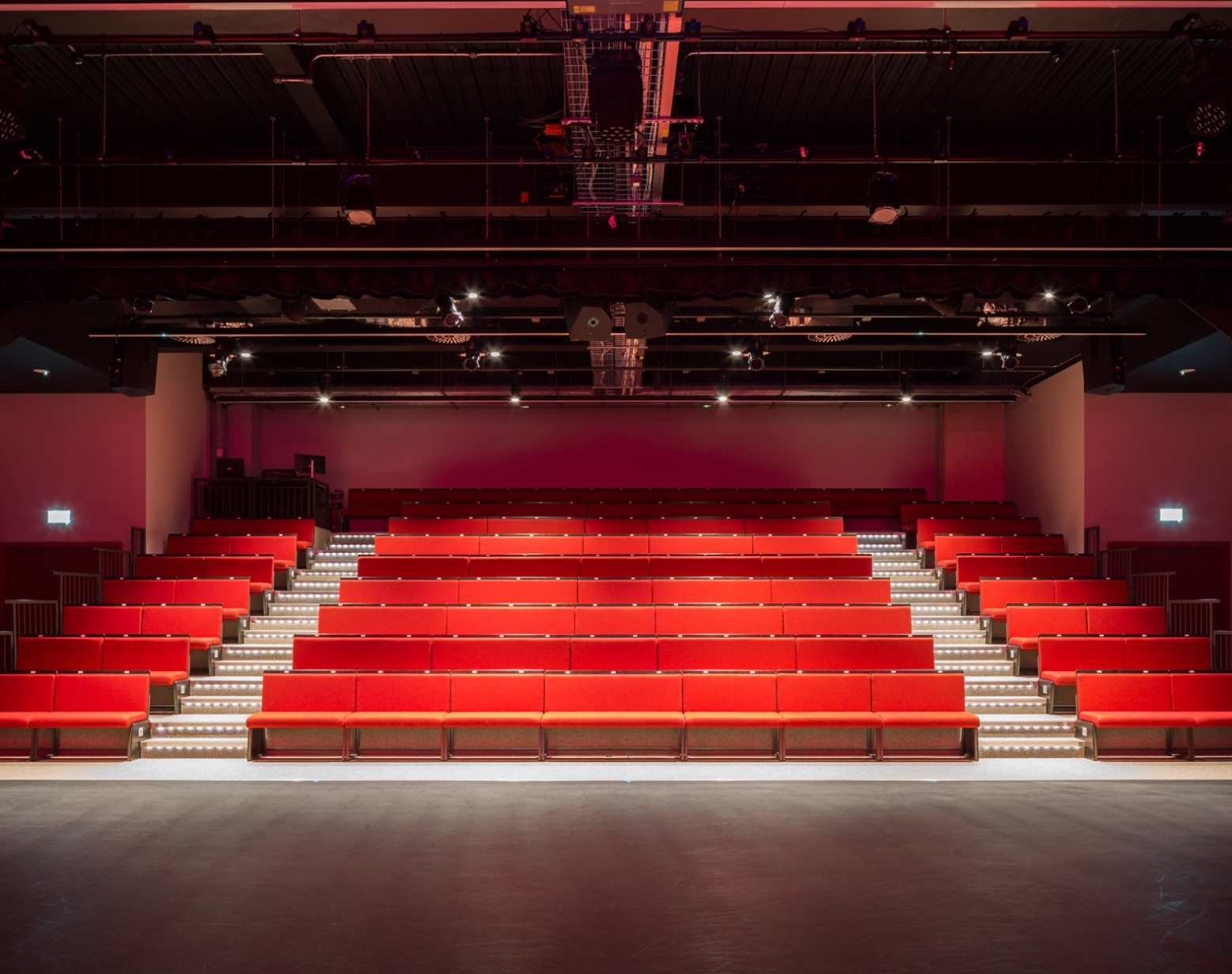
Royal Academy of Dance
The new global headquarters of the Royal Academy of Dance (RAD) inhabits the ground and partial first floor of a high-rise residential development. From the outset, t-sa embraced the constraints of the as found podium superstructure and predefined exterior fabric, responding as if with an intervention to an existing building.
Approaching the design sparingly, modest materials and forms of construction were elevated to an architectural vision appropriate for the RAD – an organisation with a prestigious history and a world-wide presence.
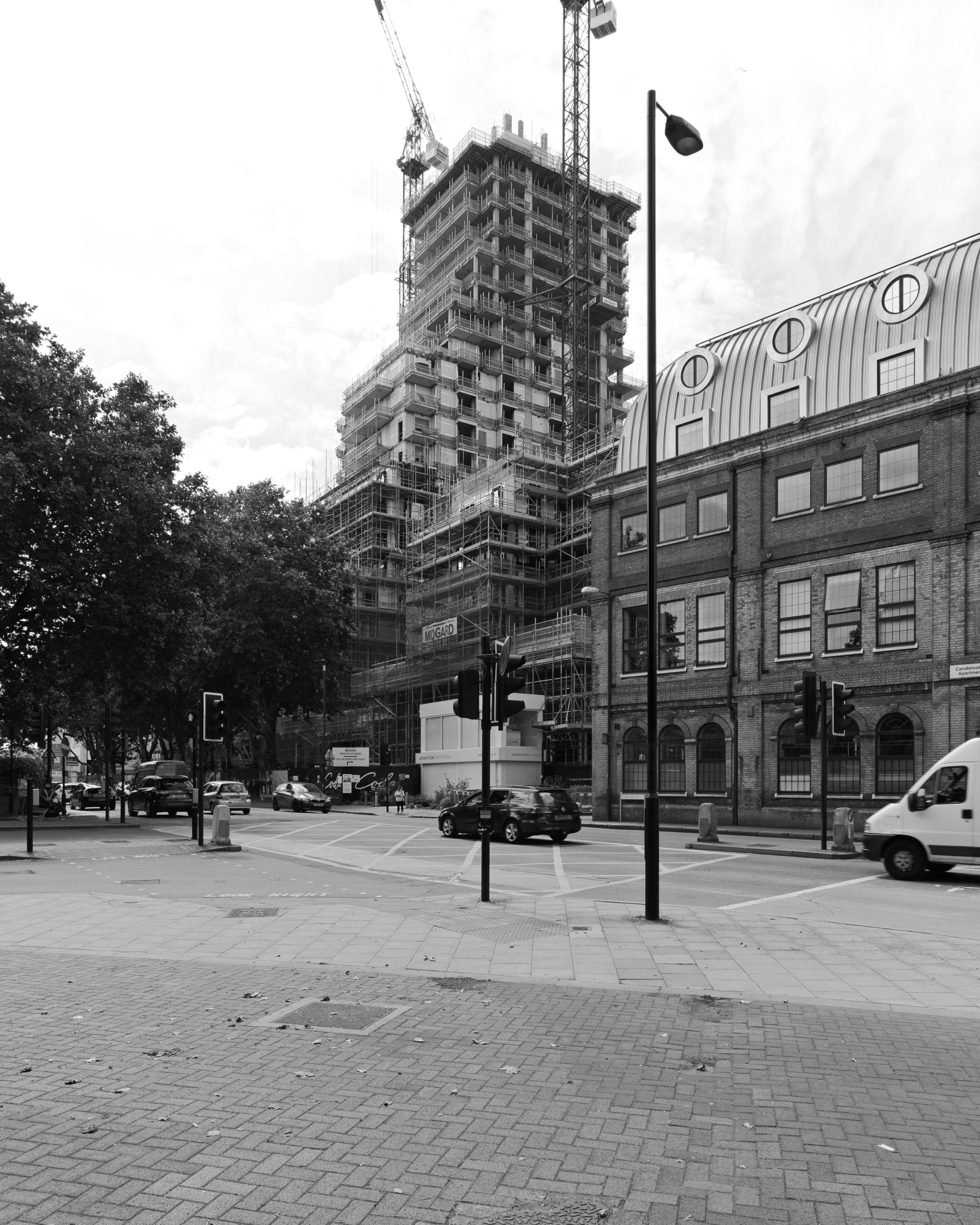
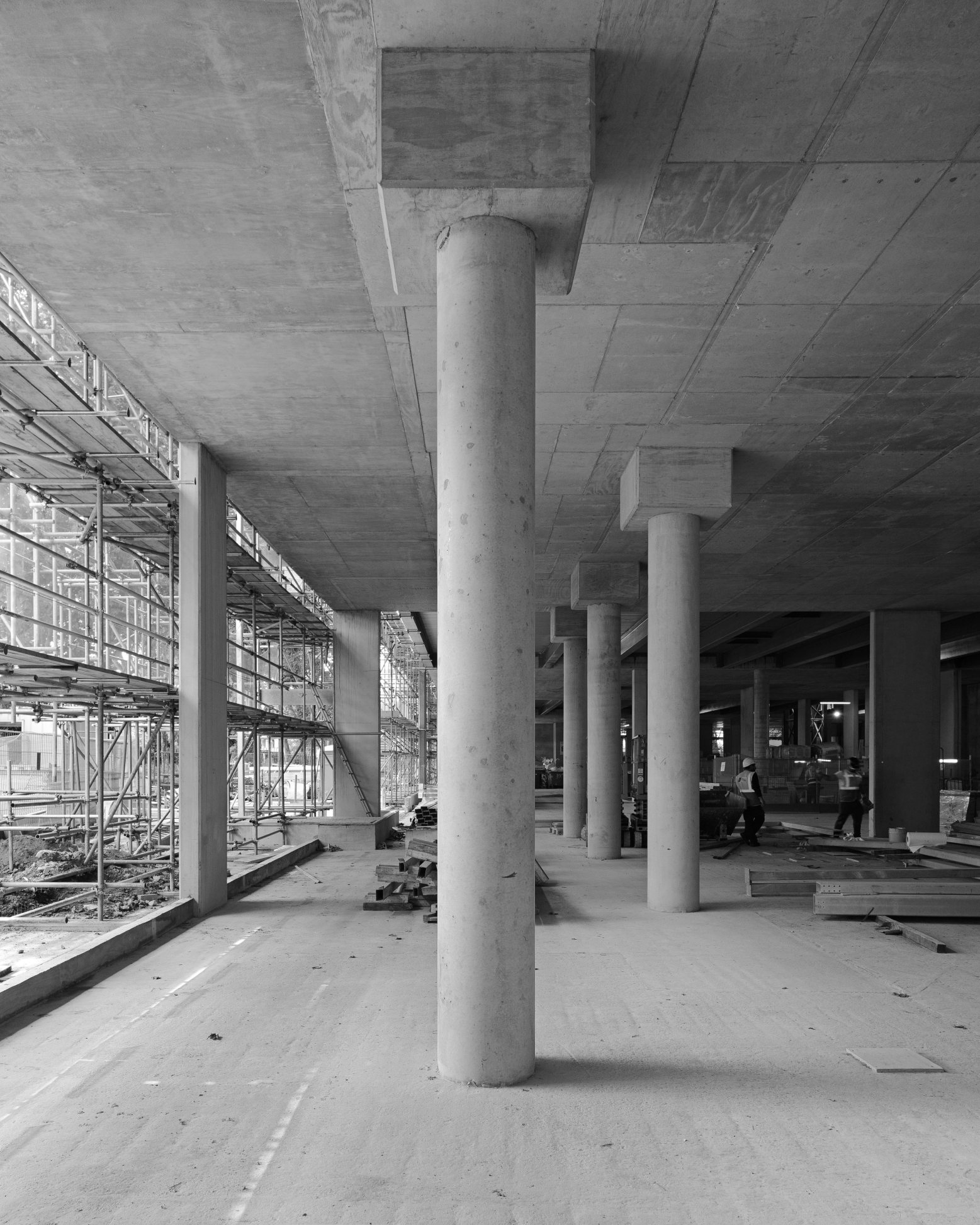
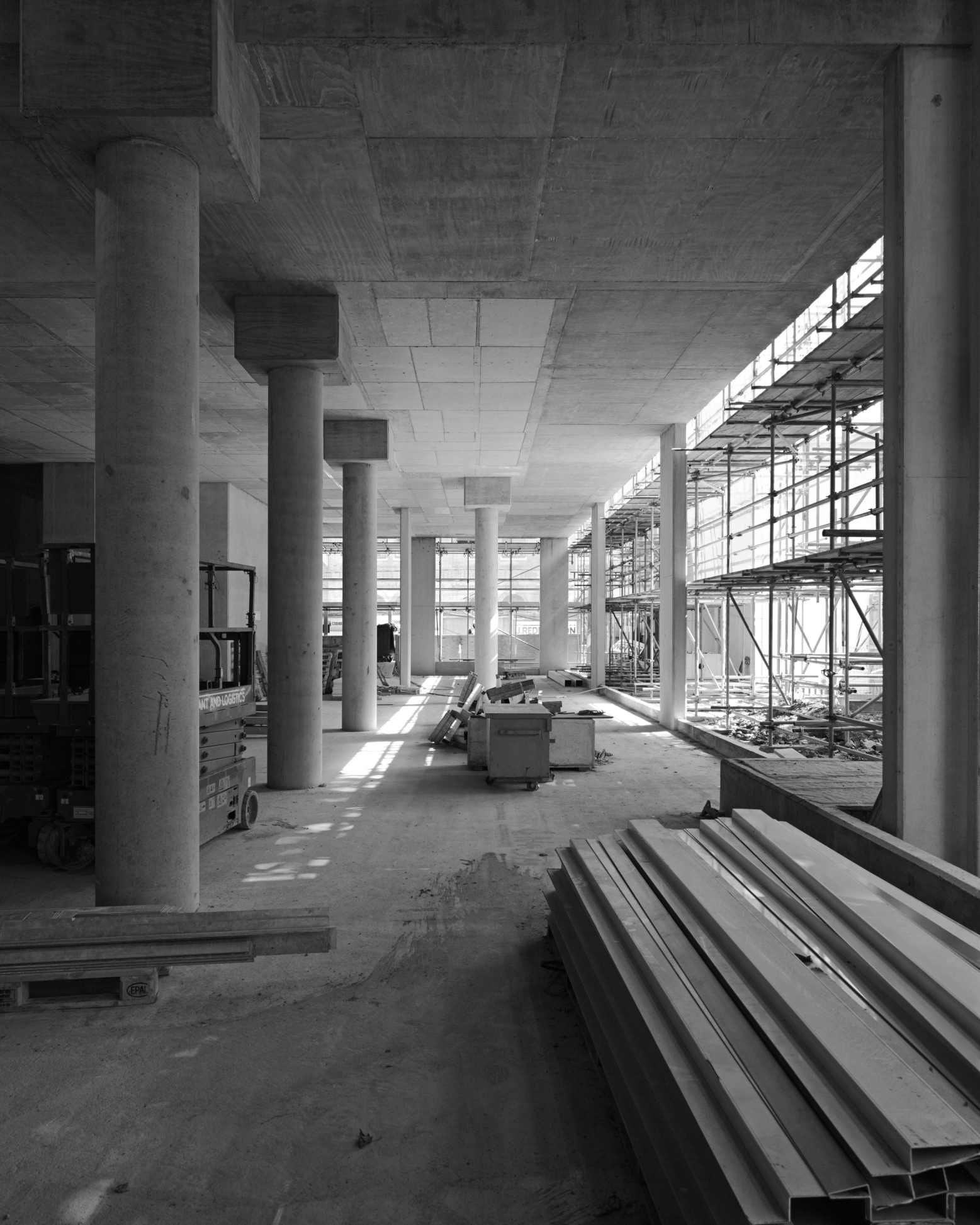
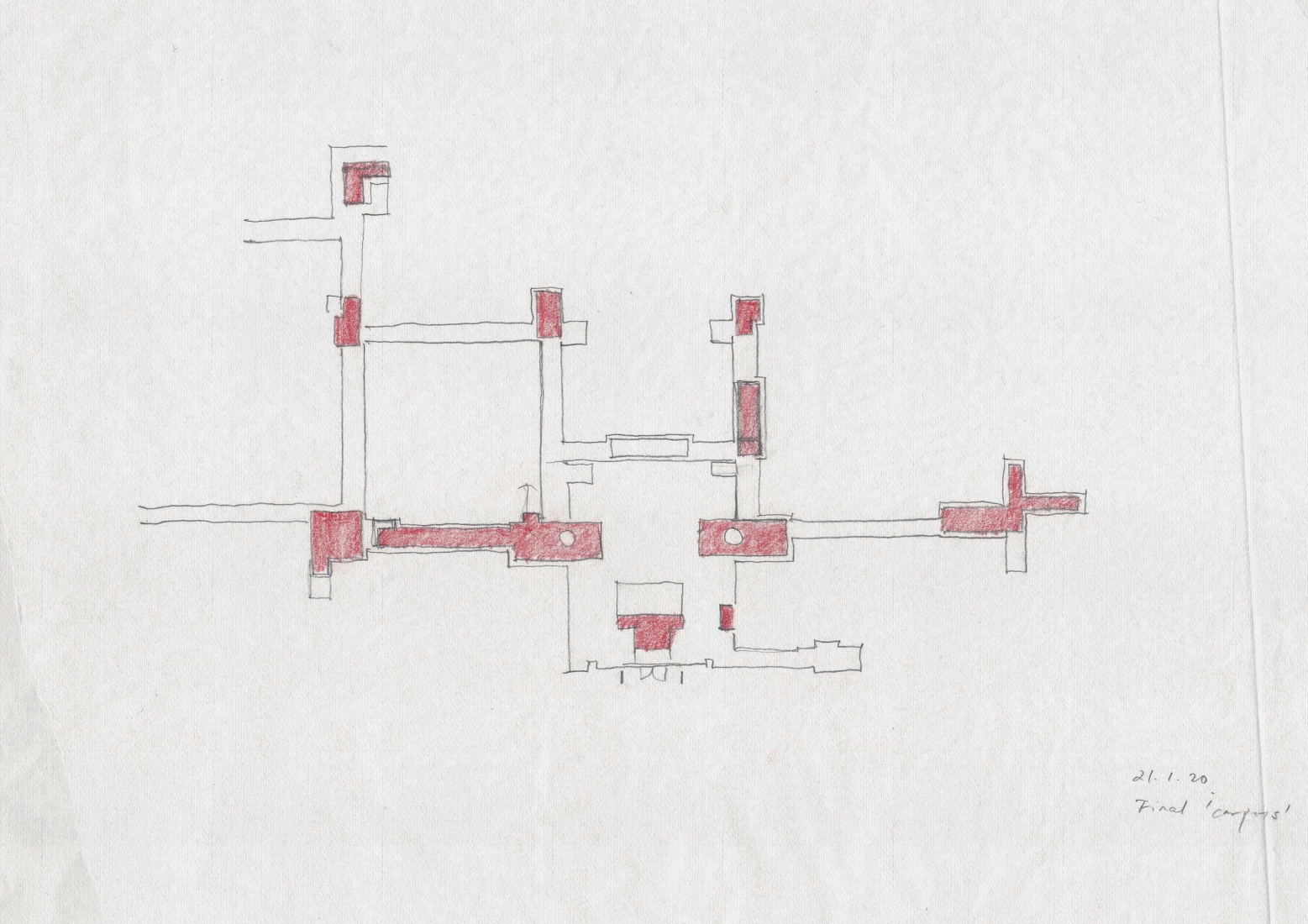
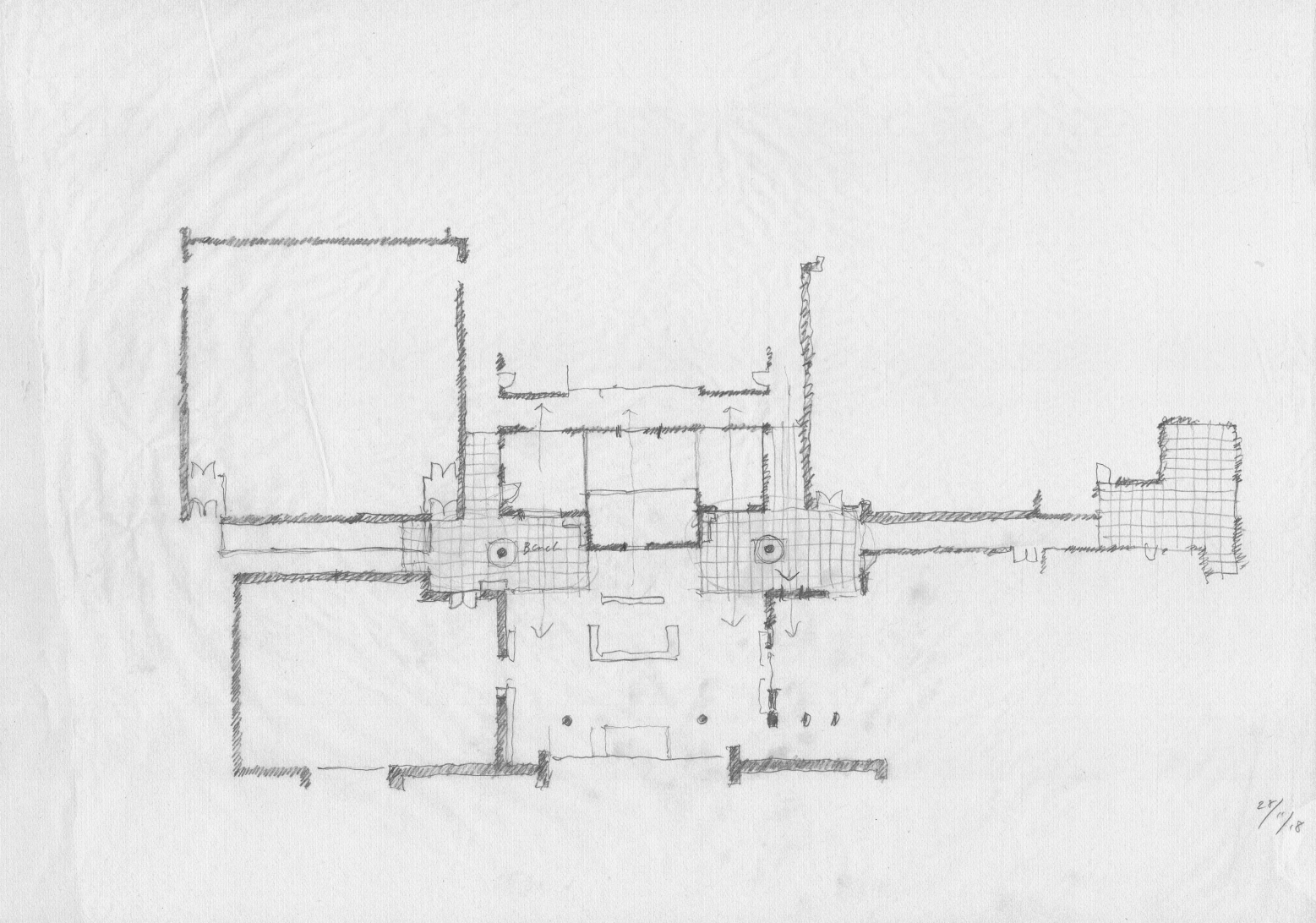
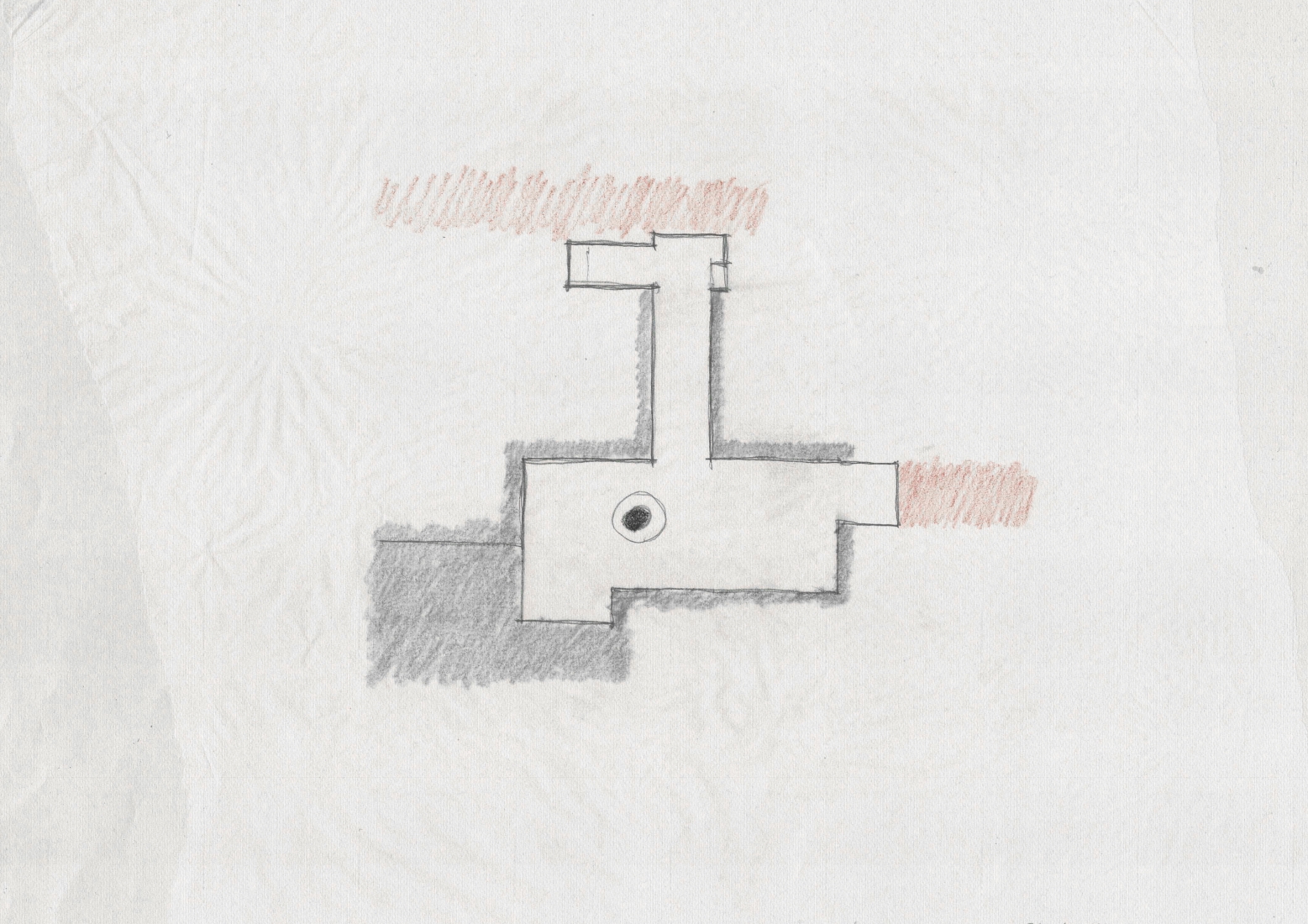
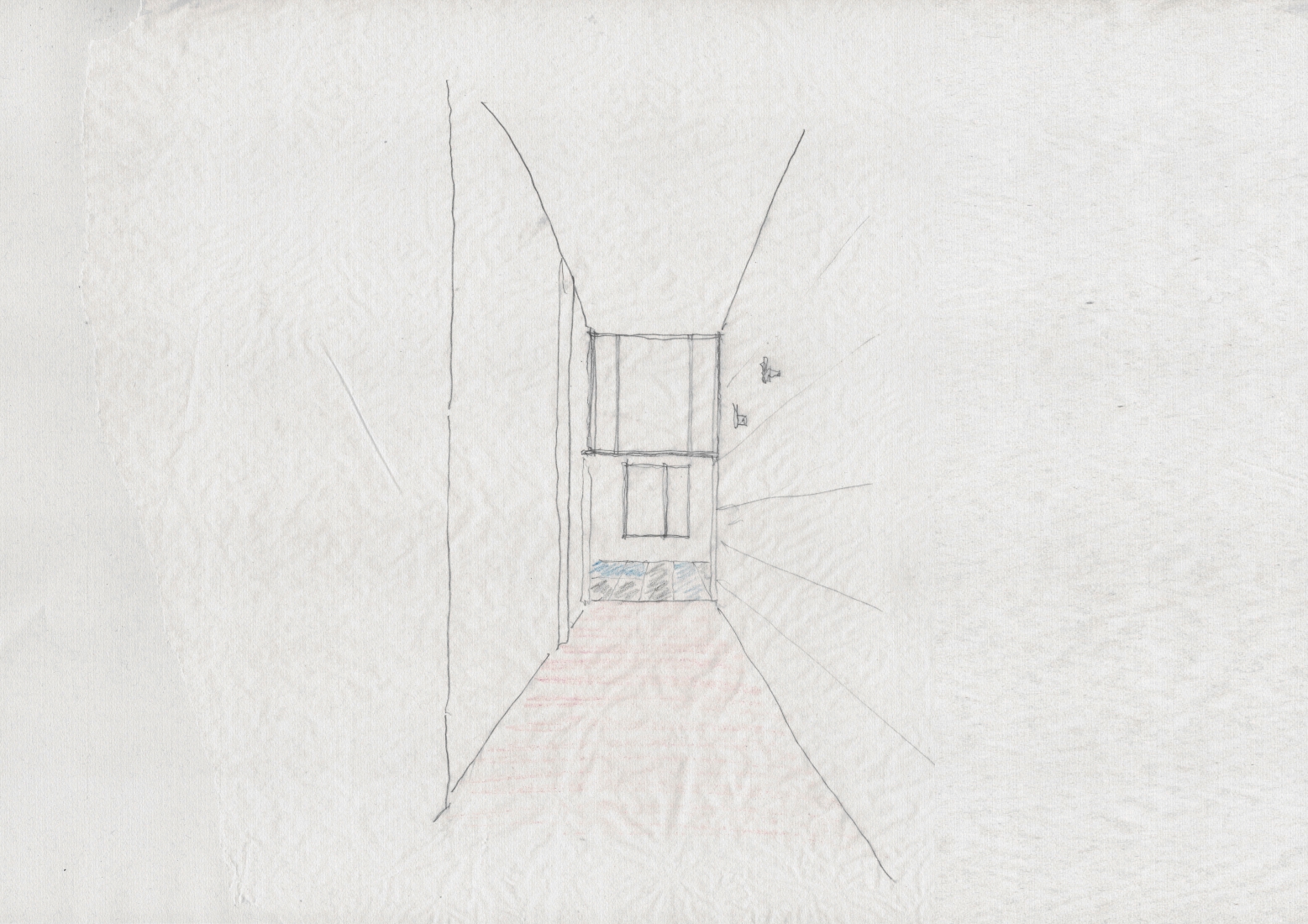
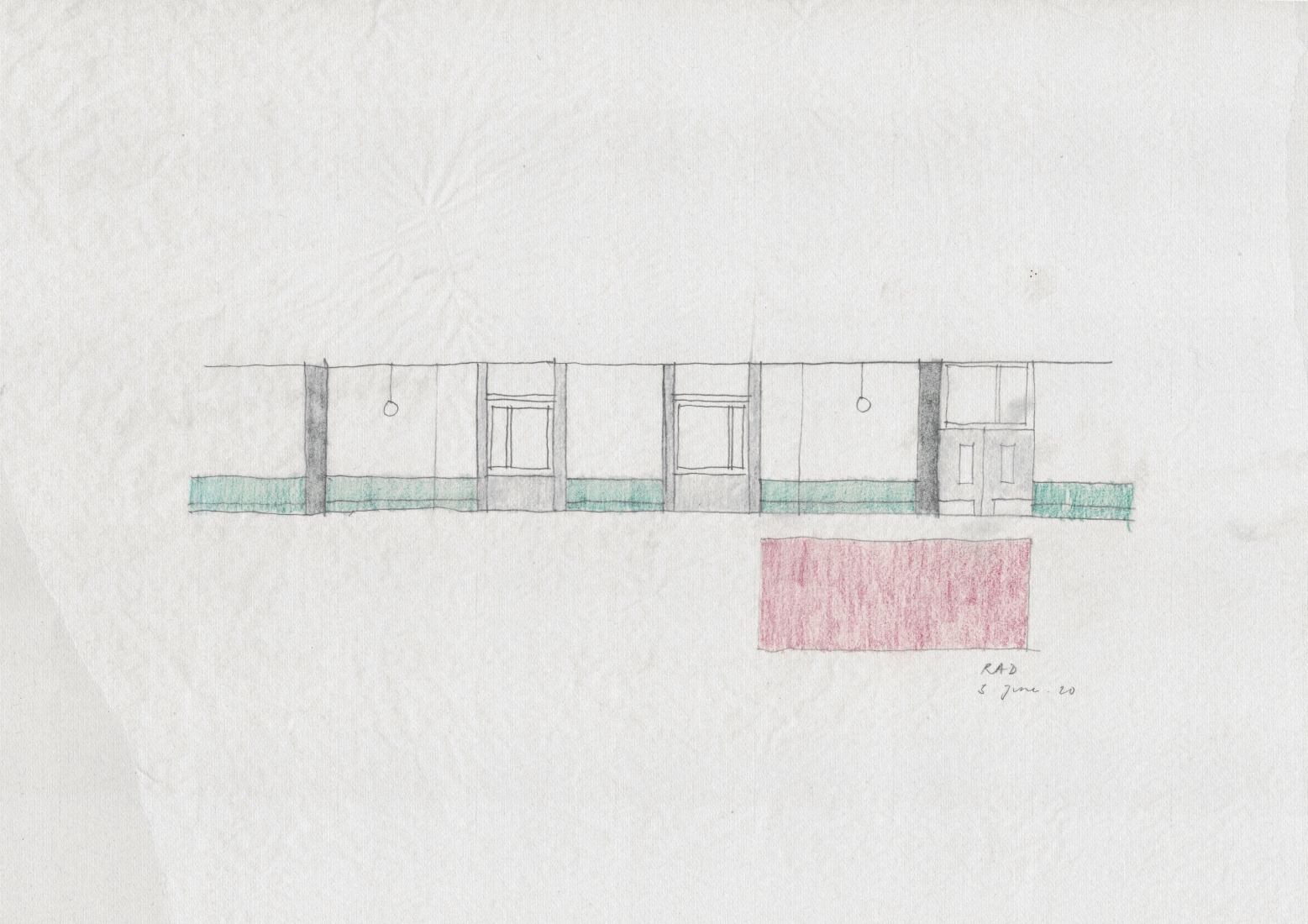
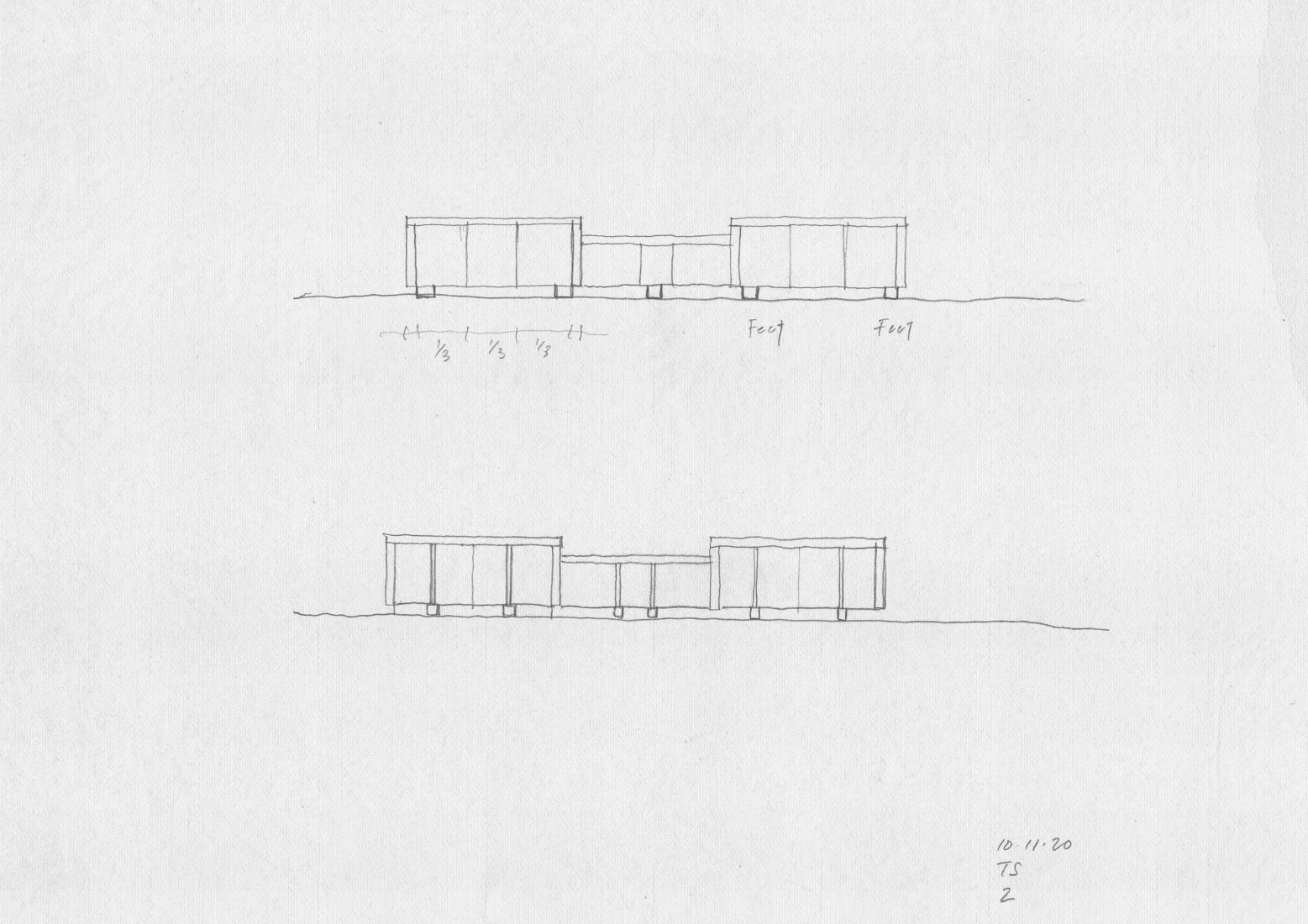
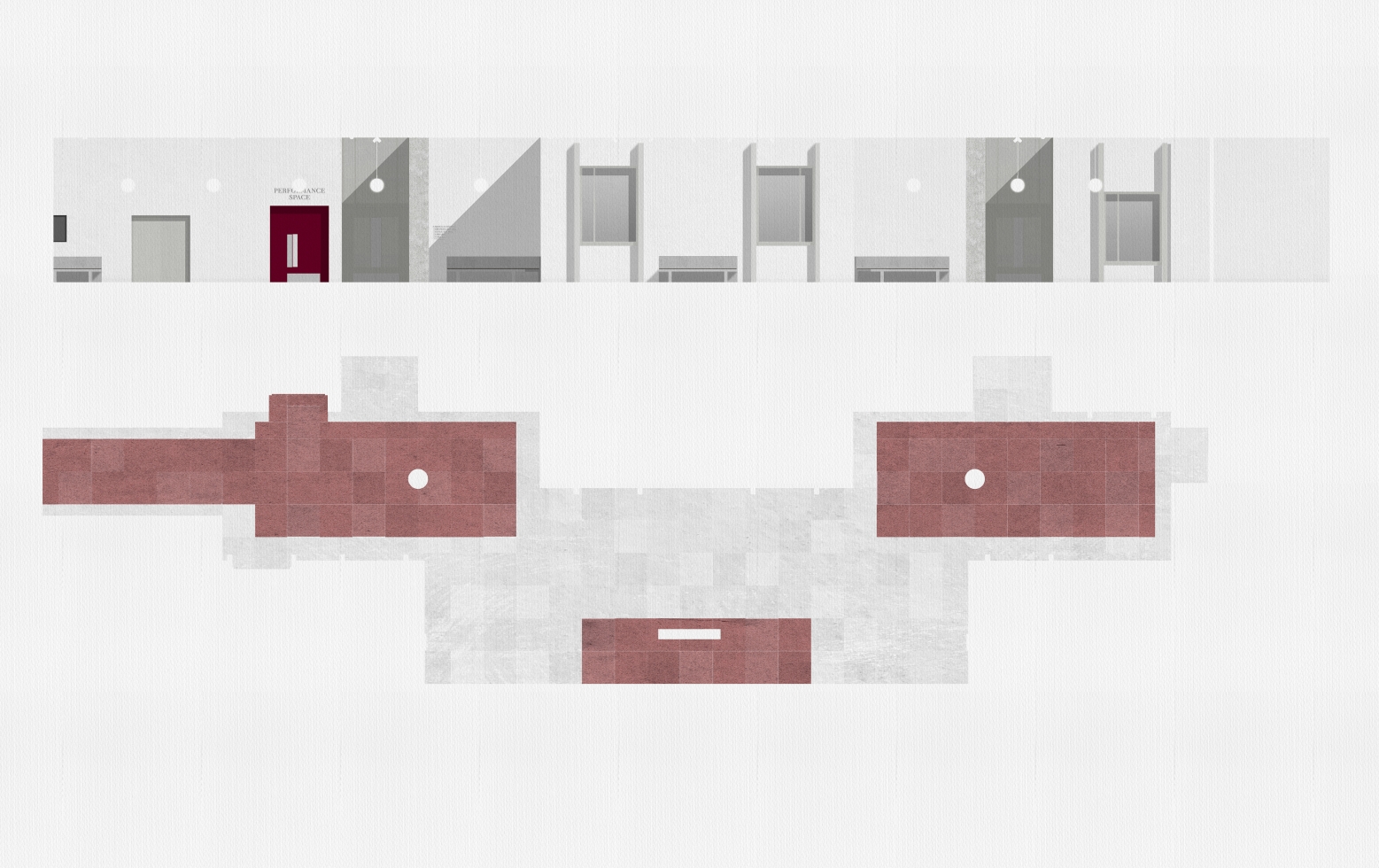
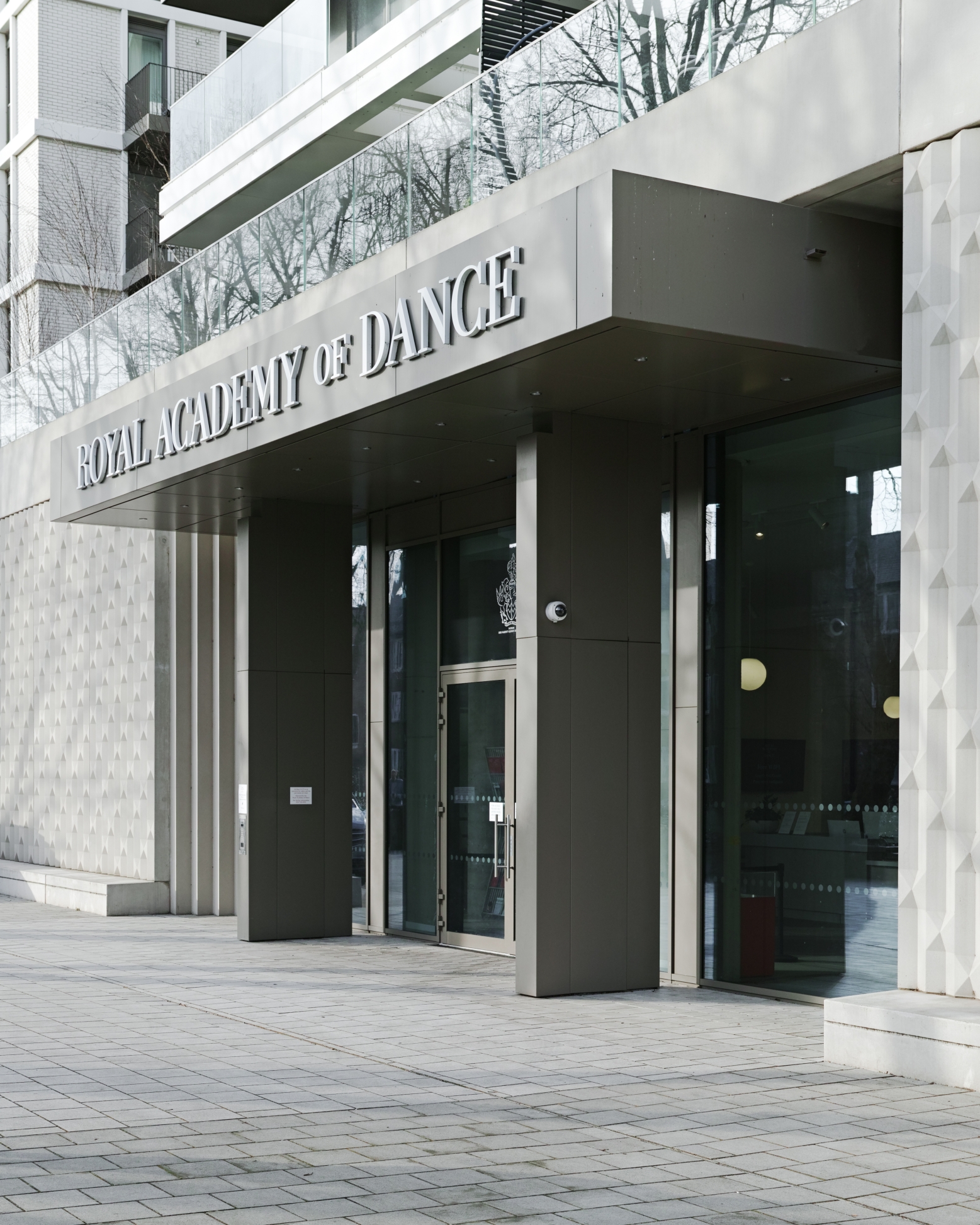
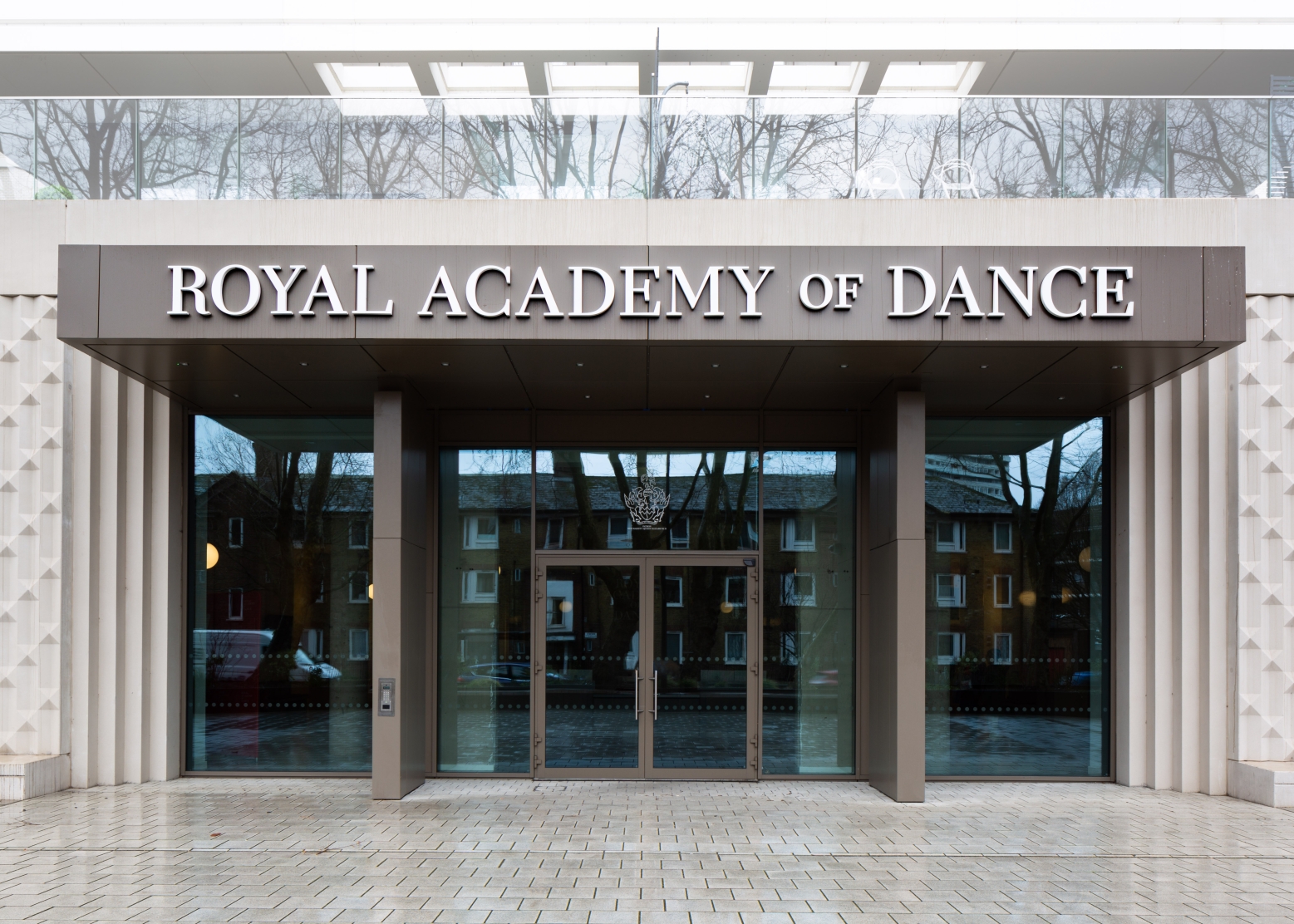
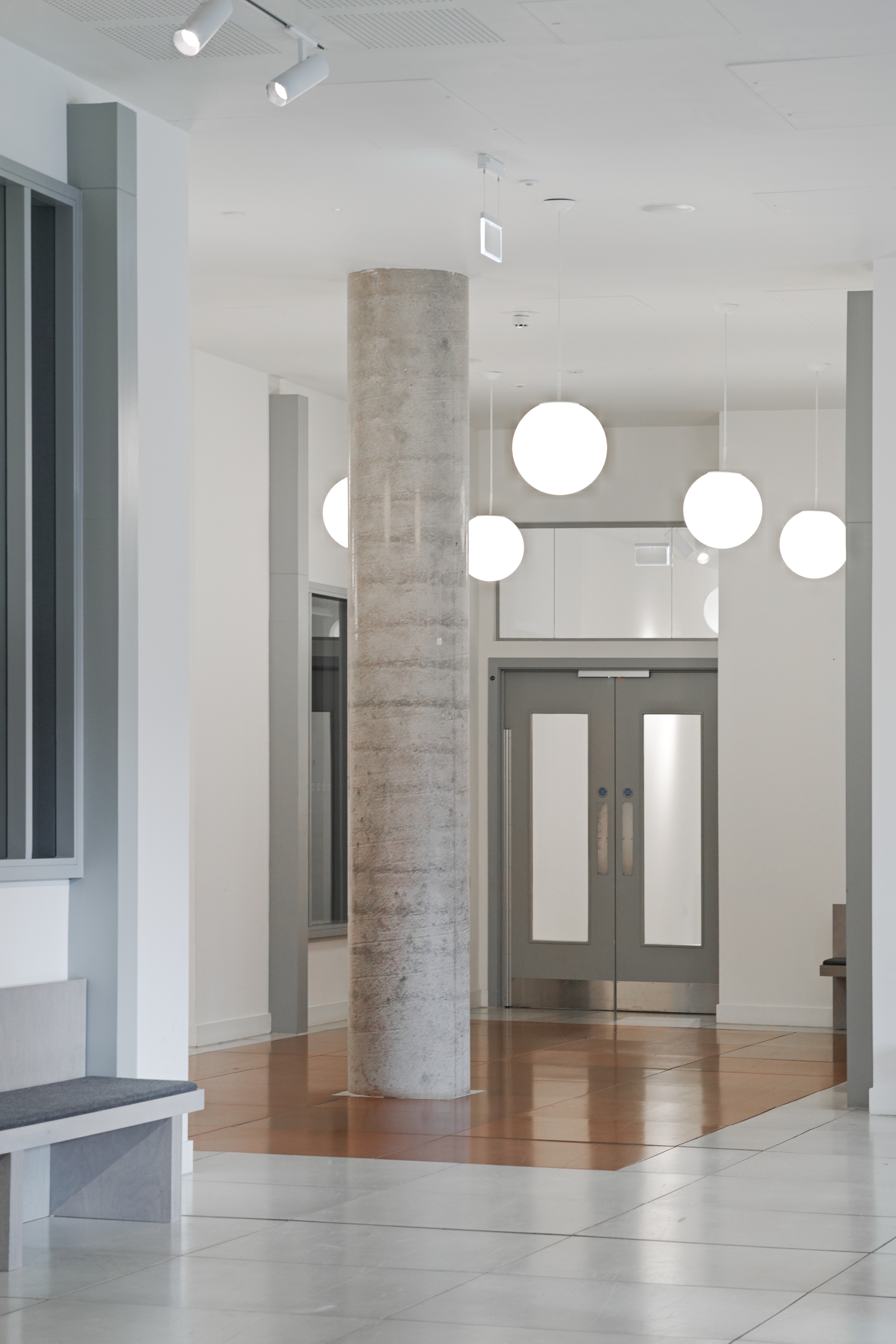
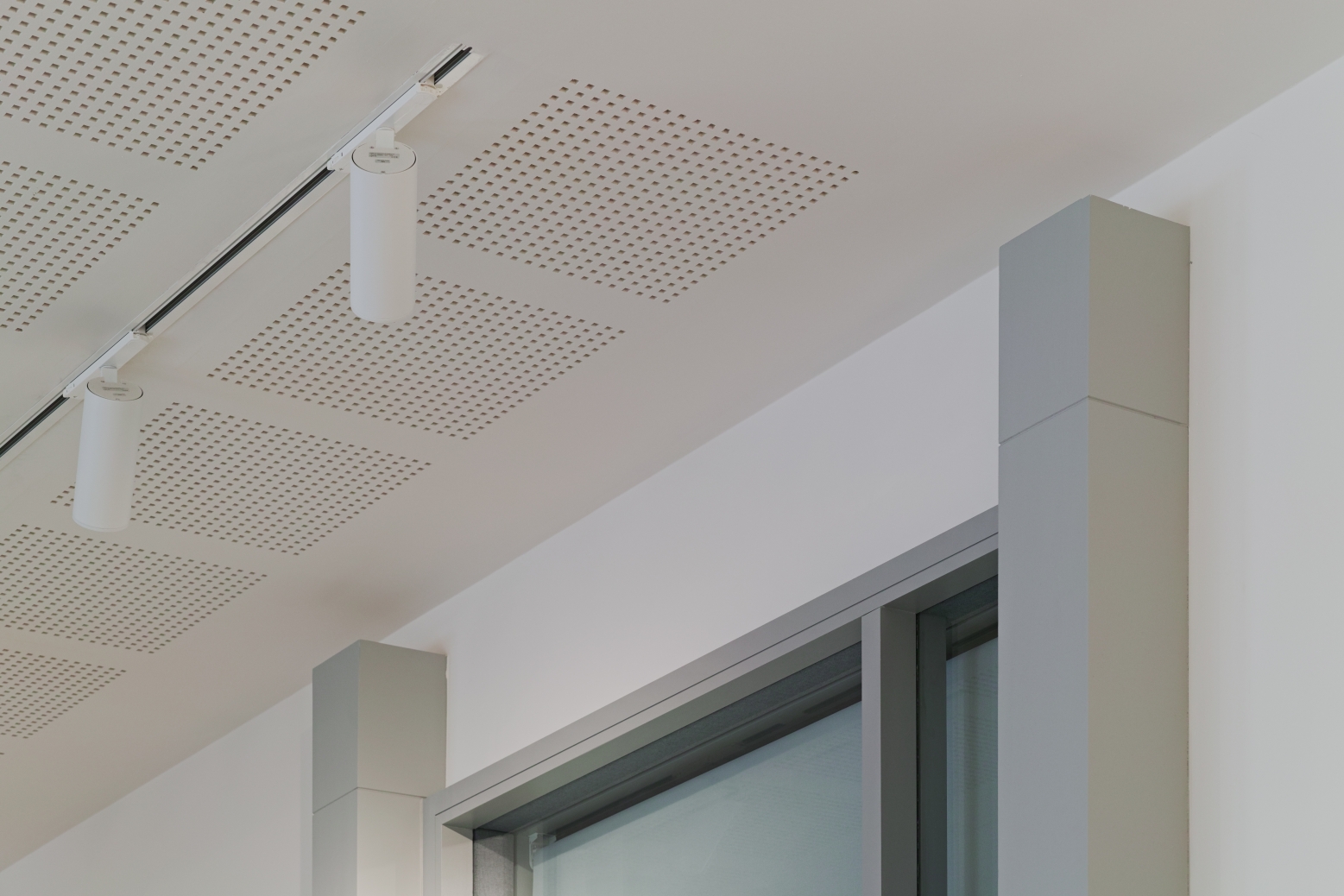
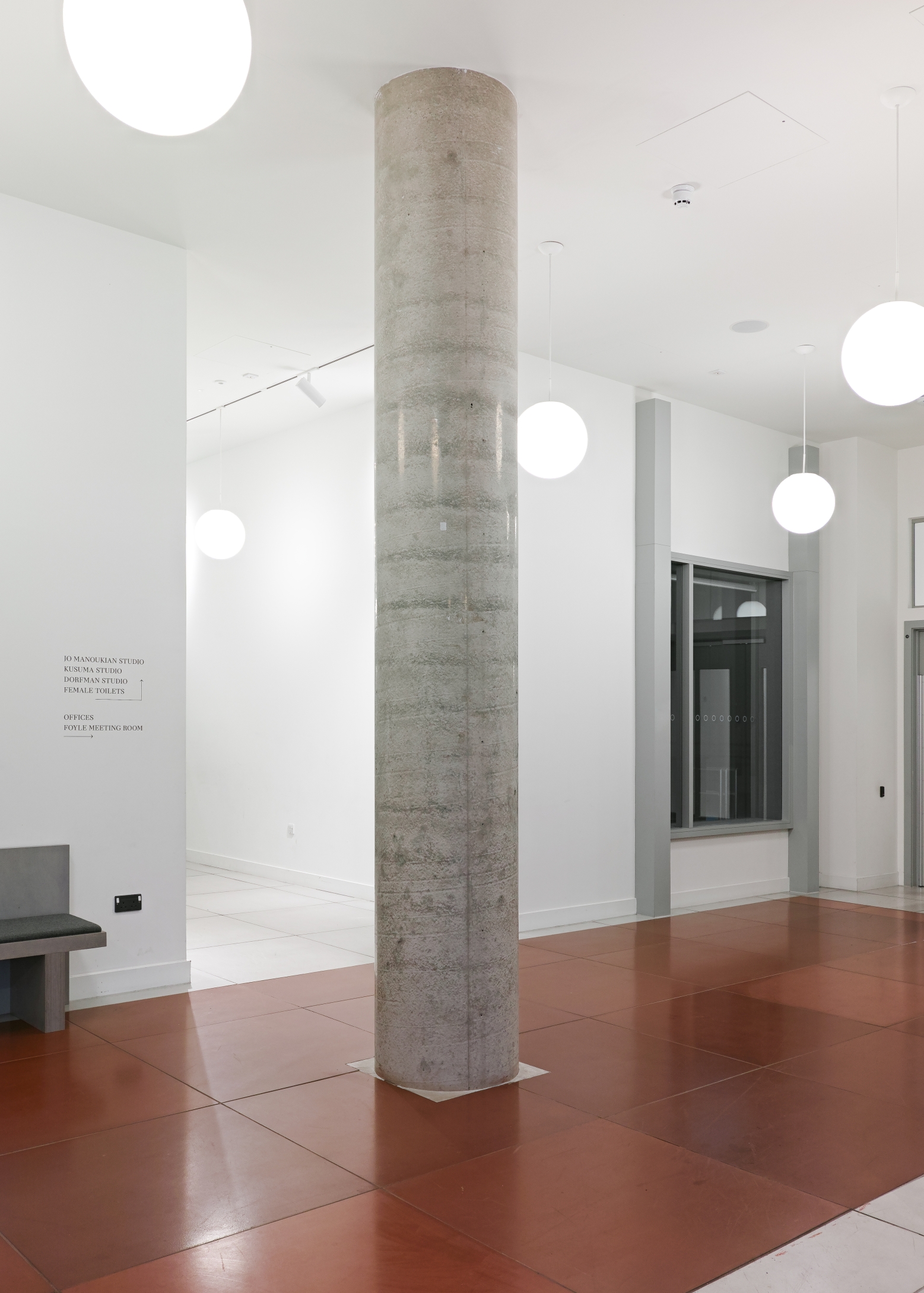
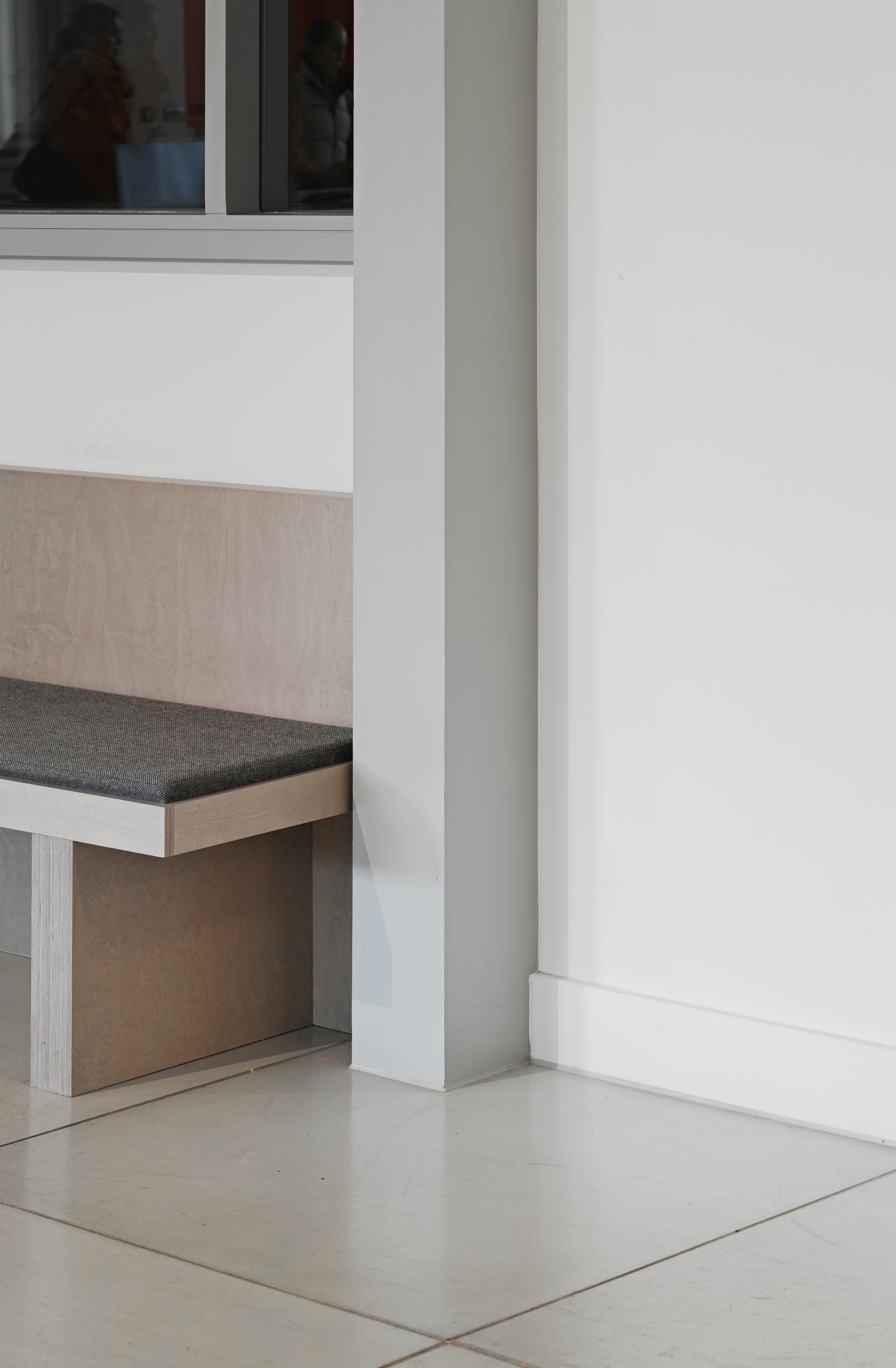
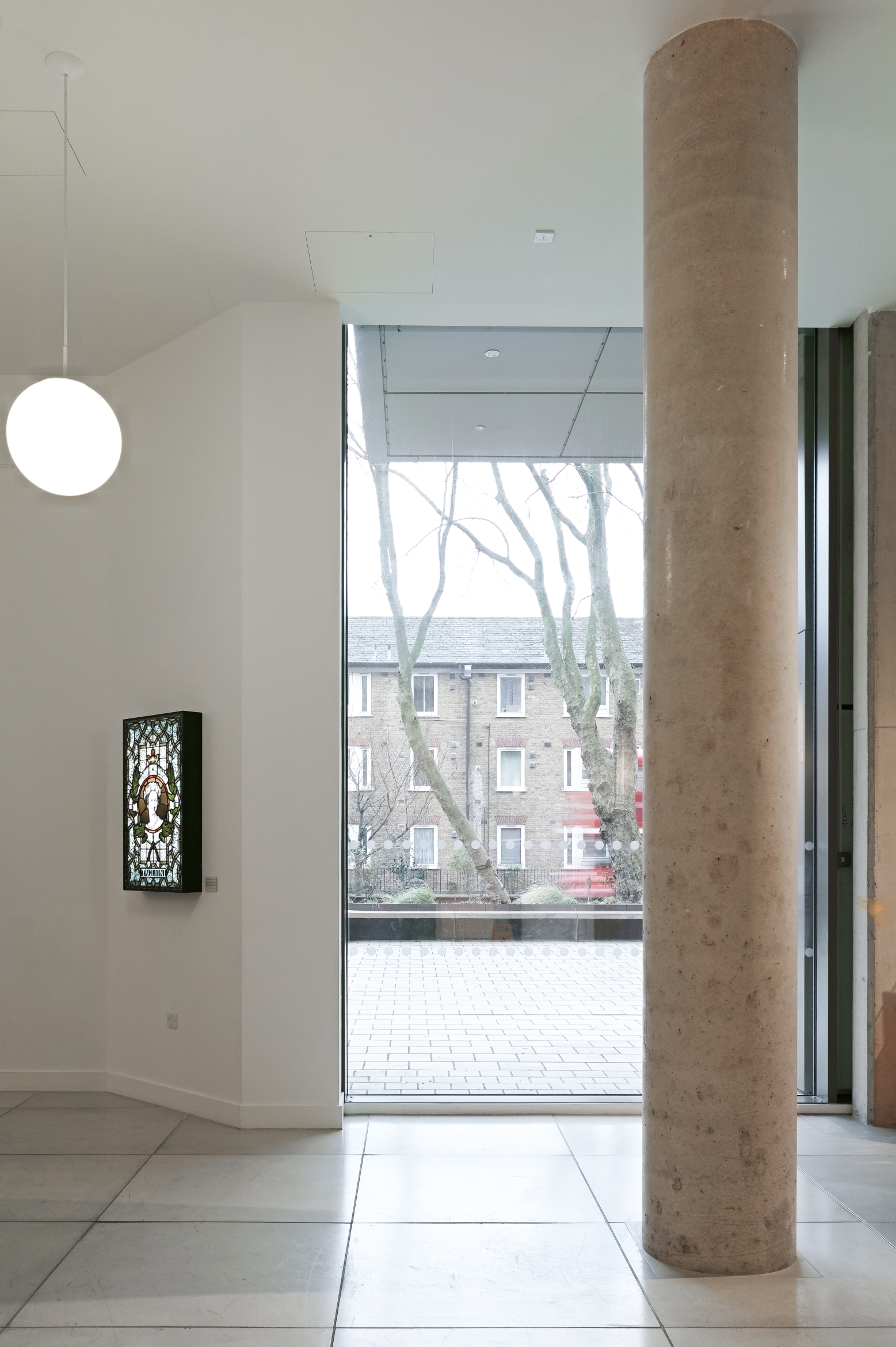
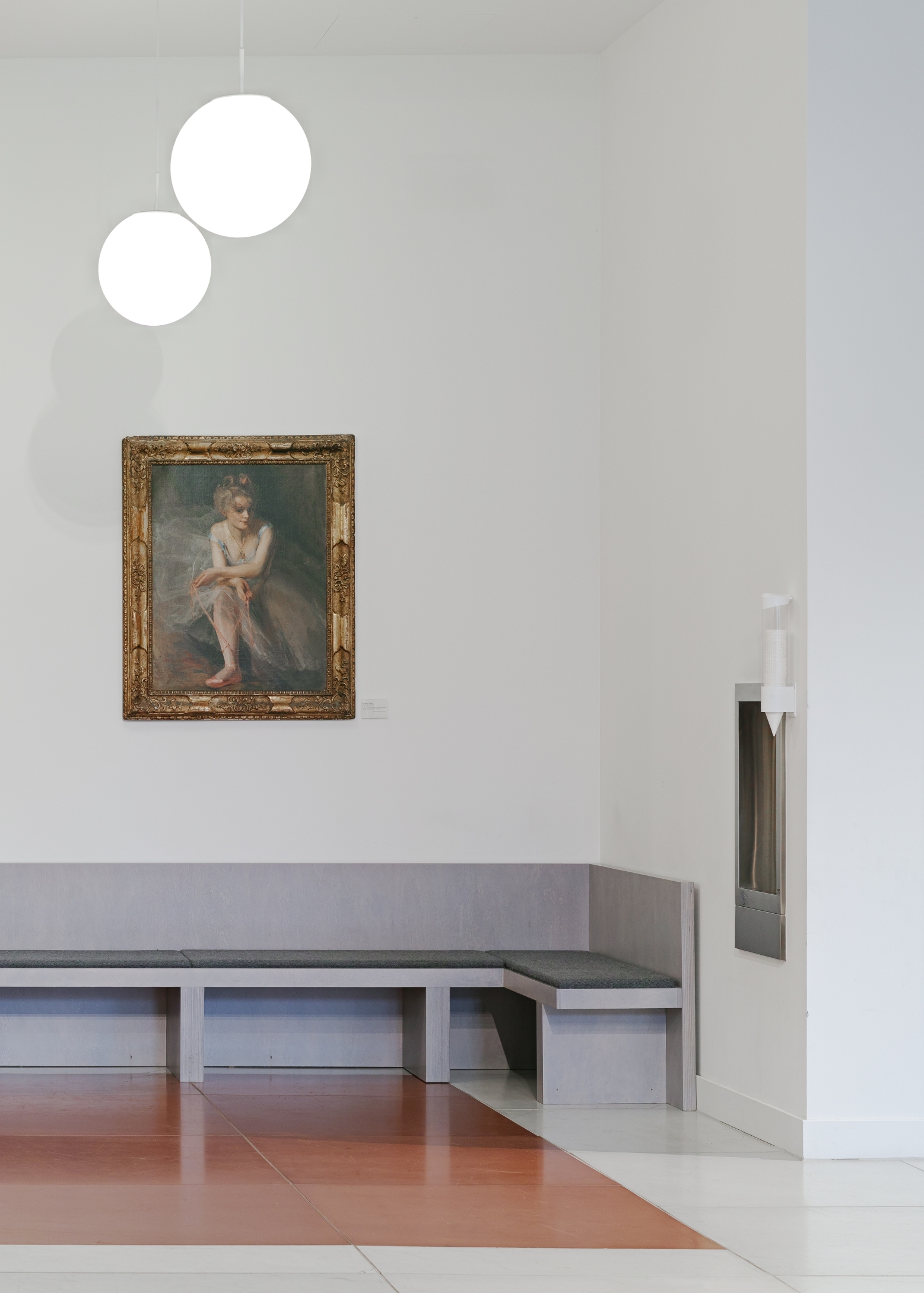
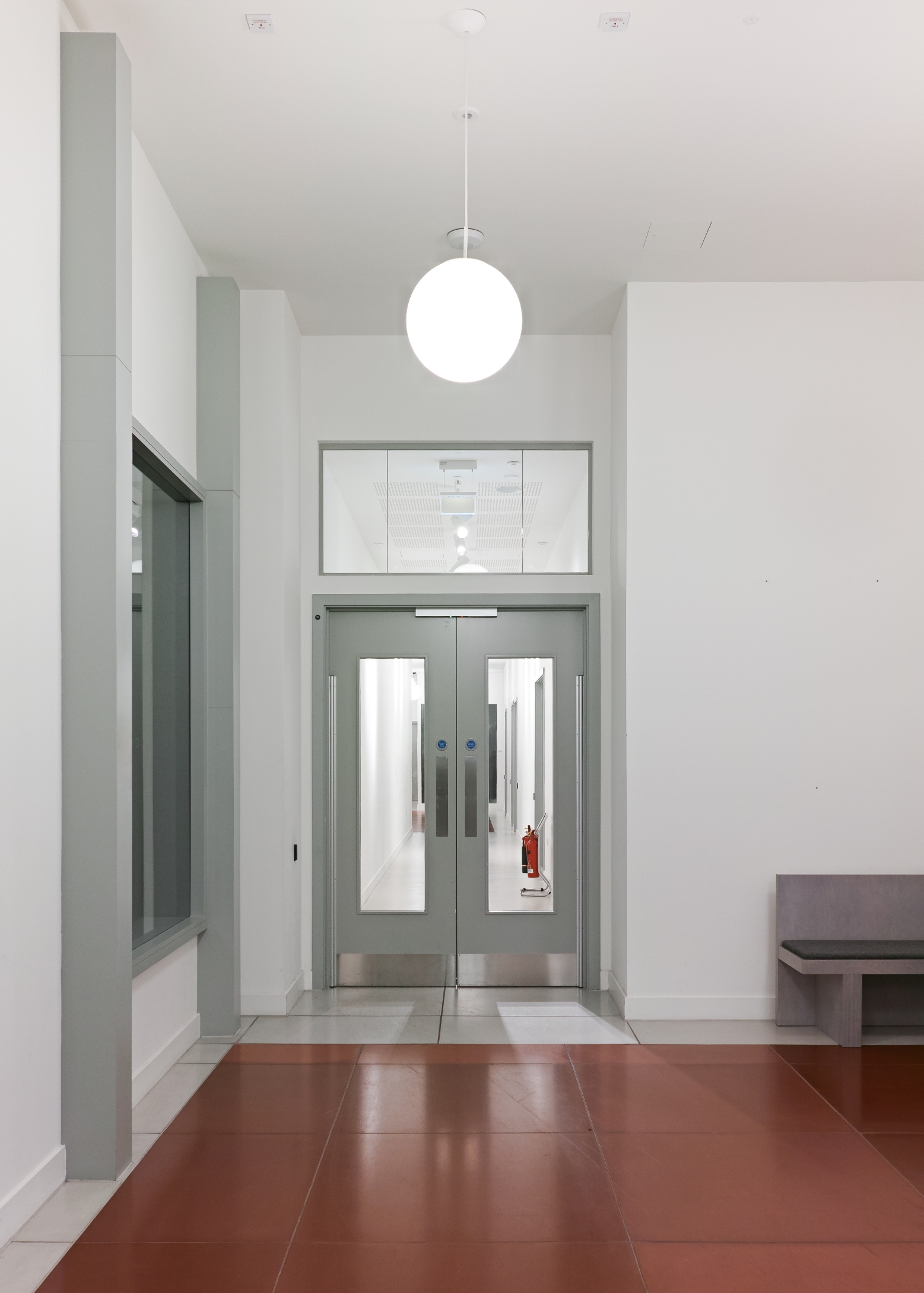
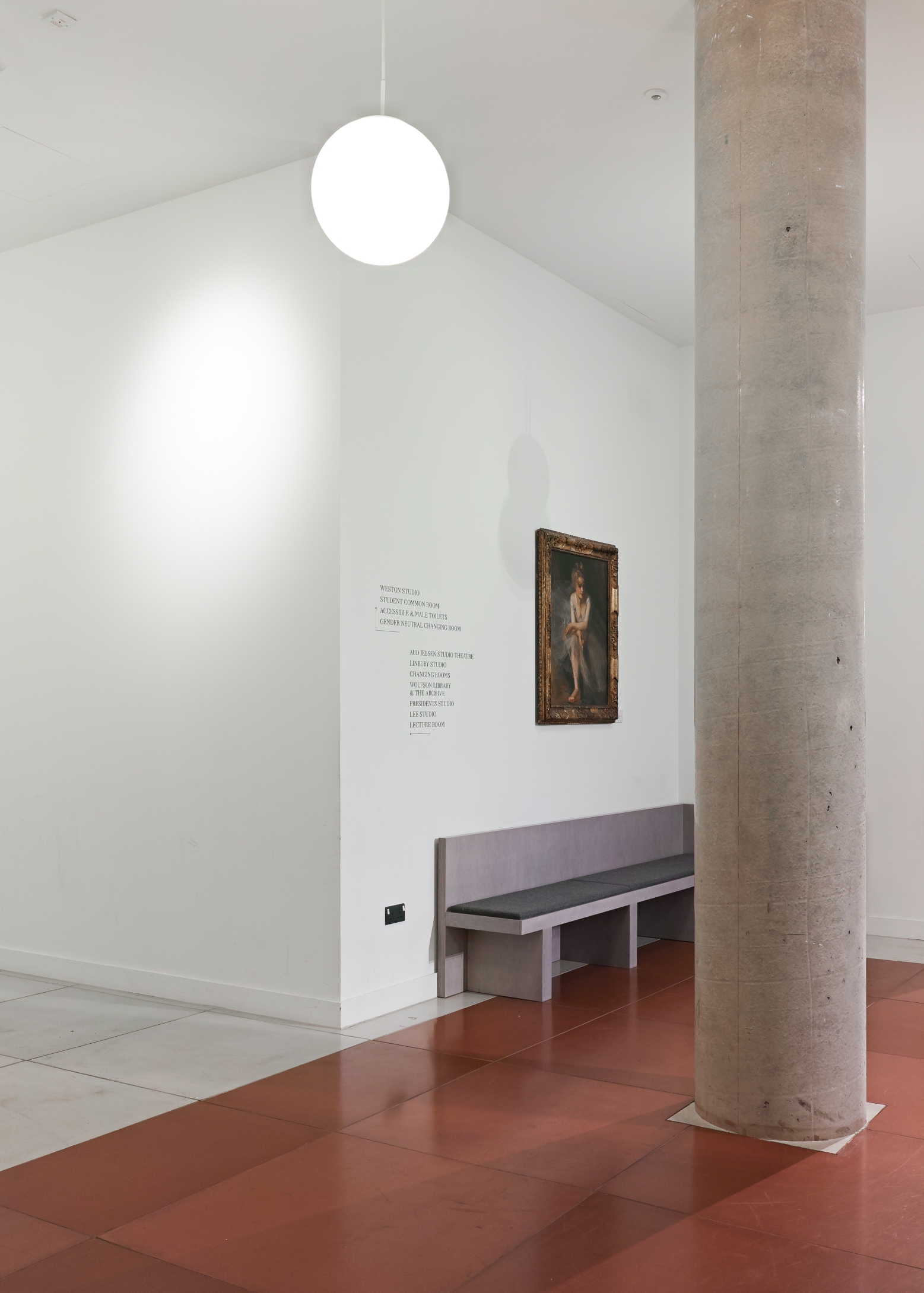
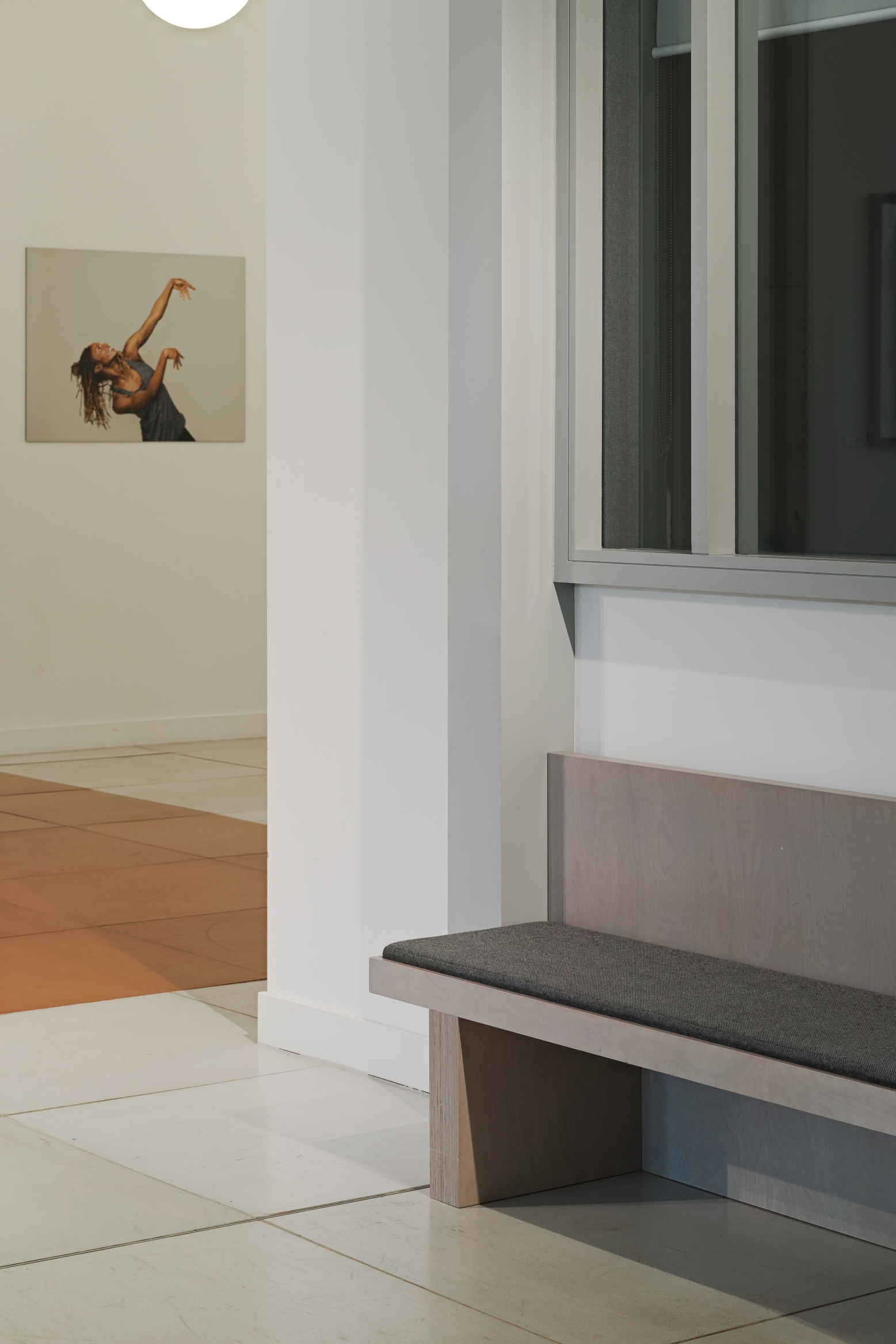
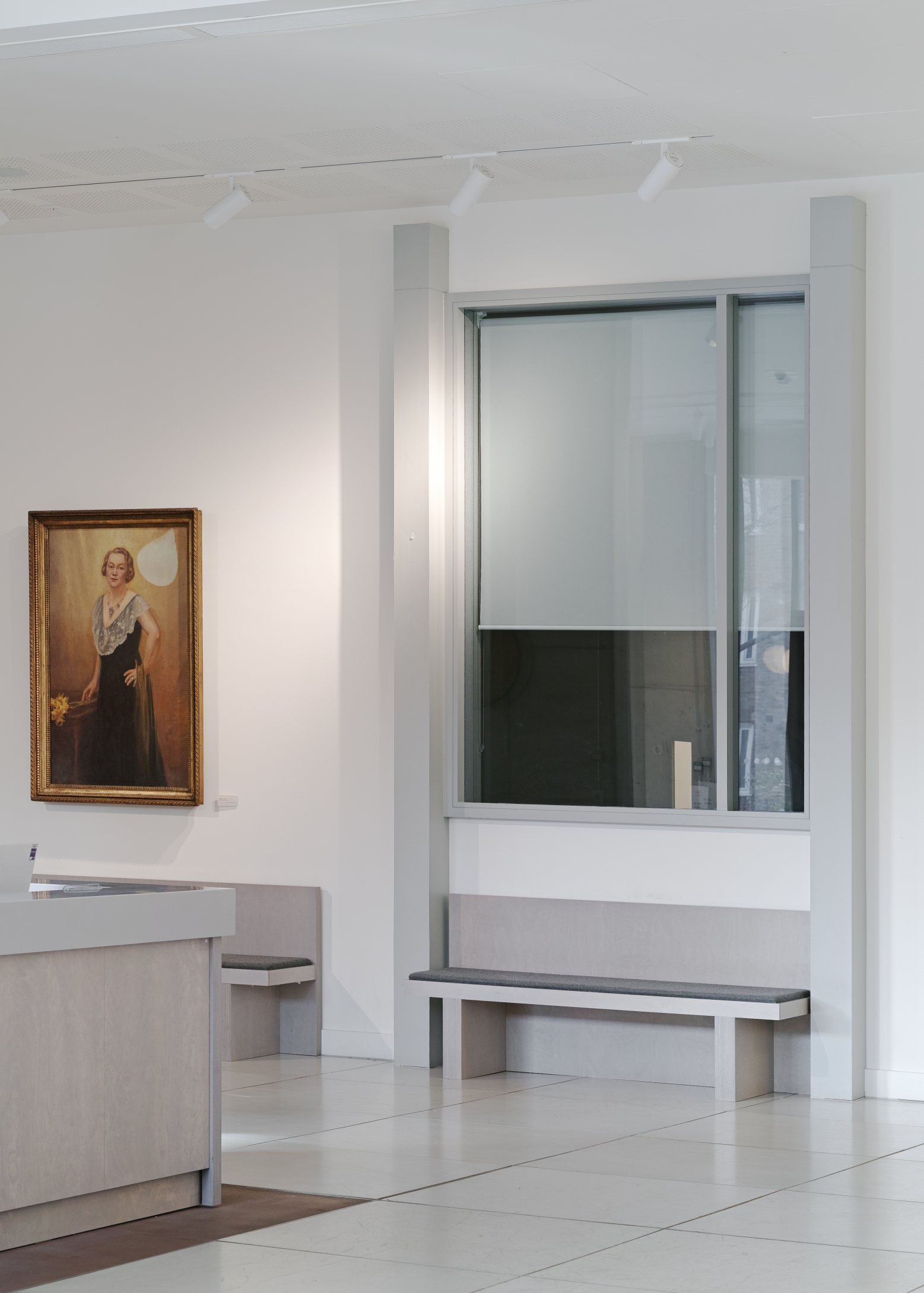
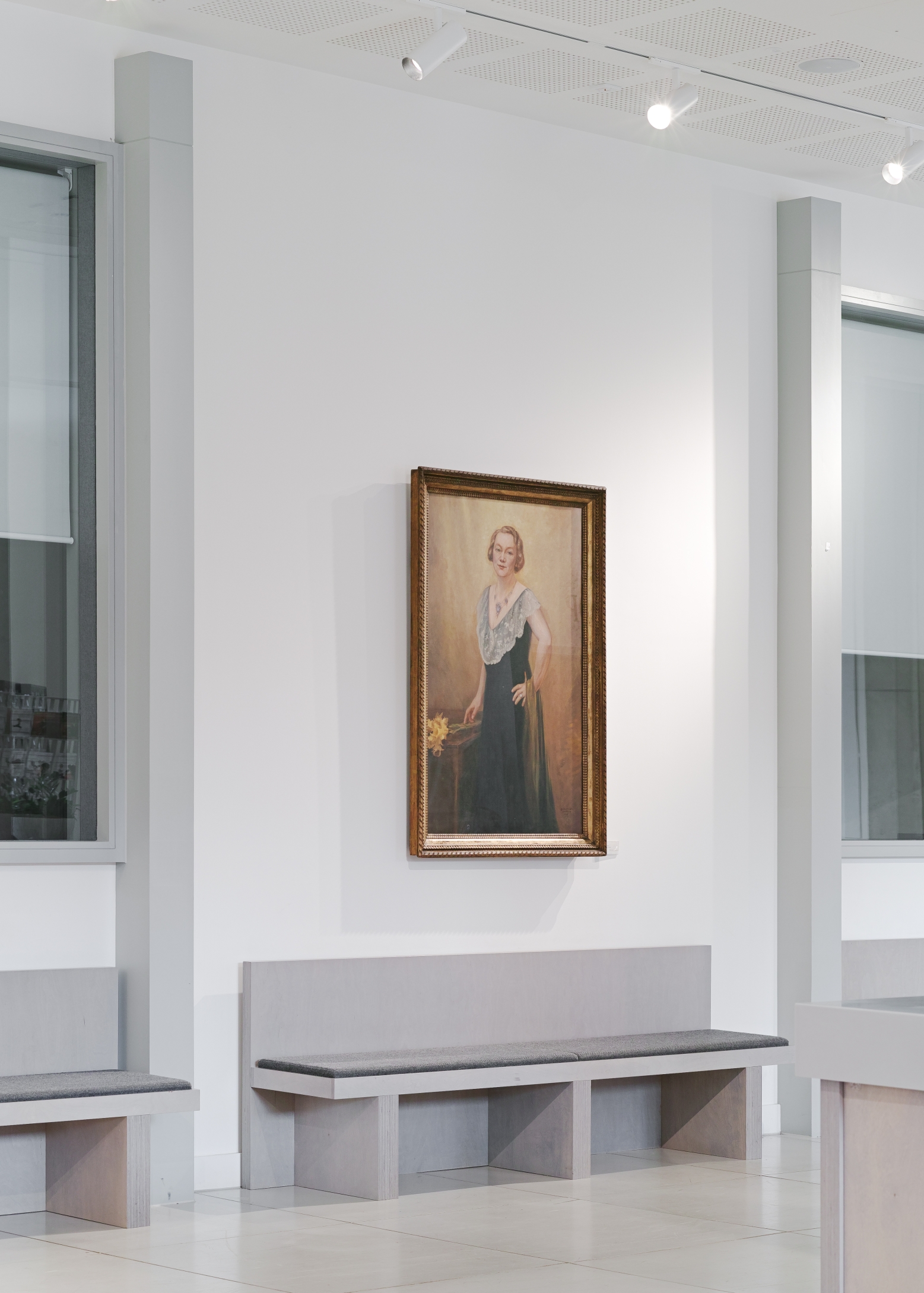
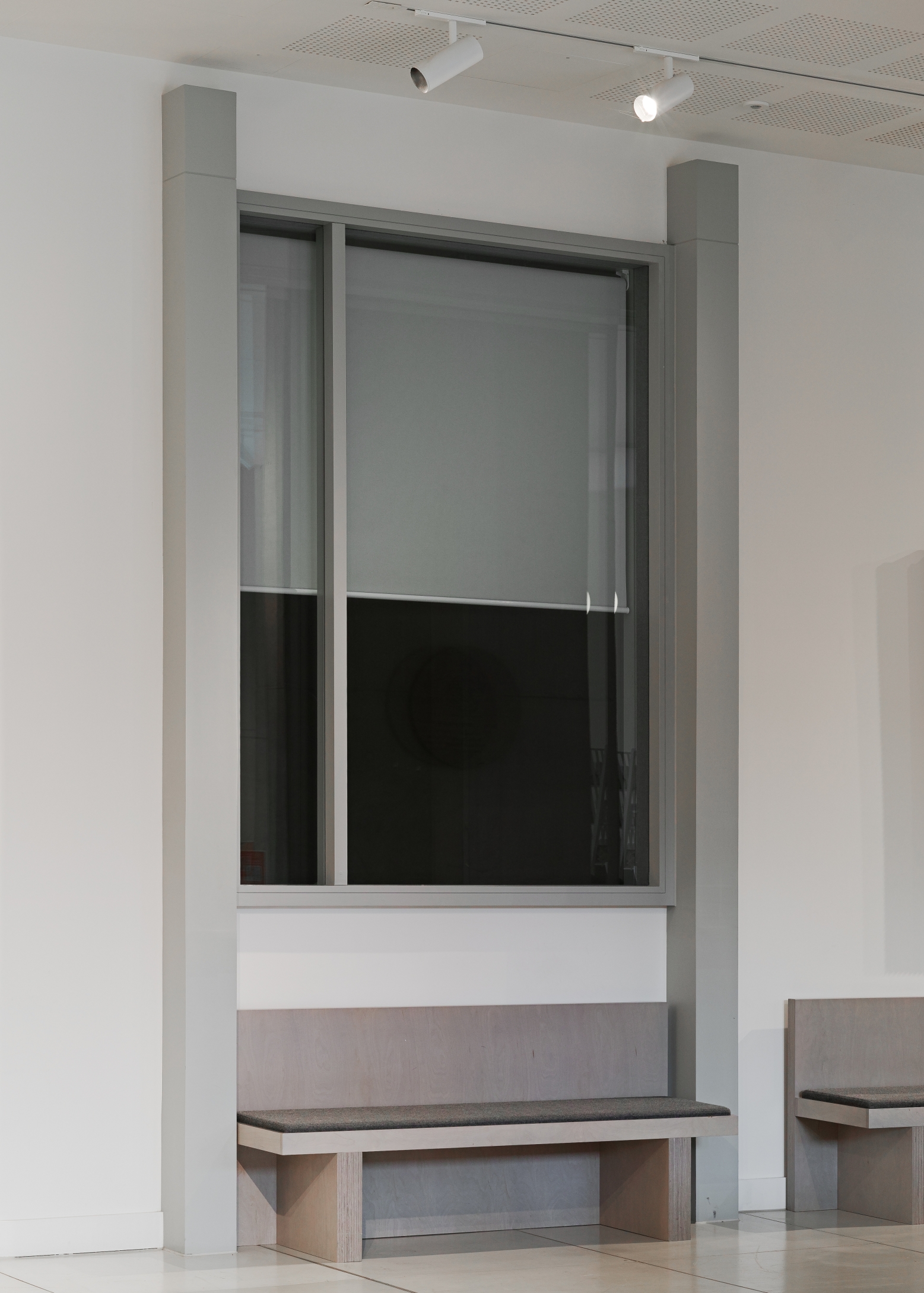
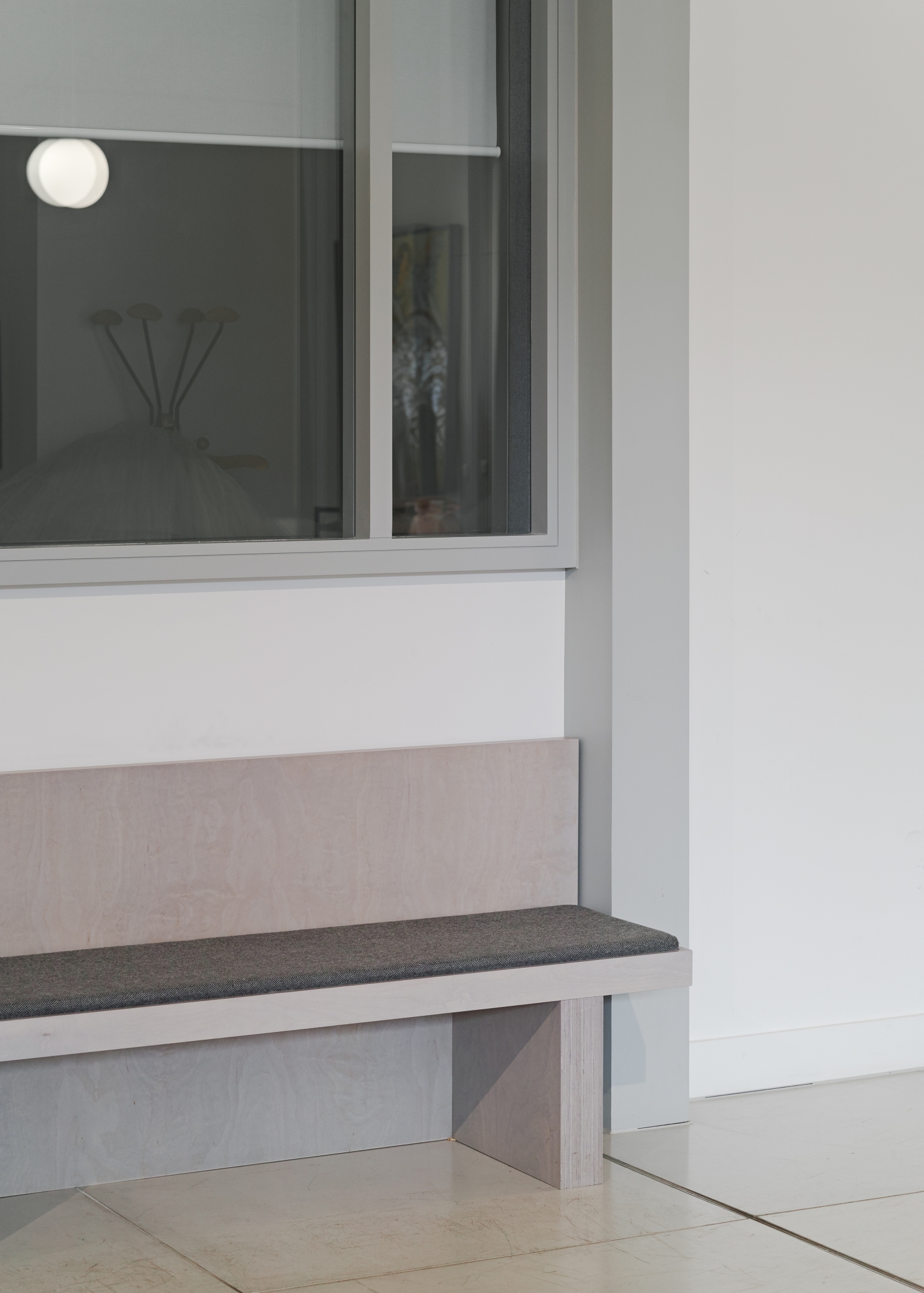
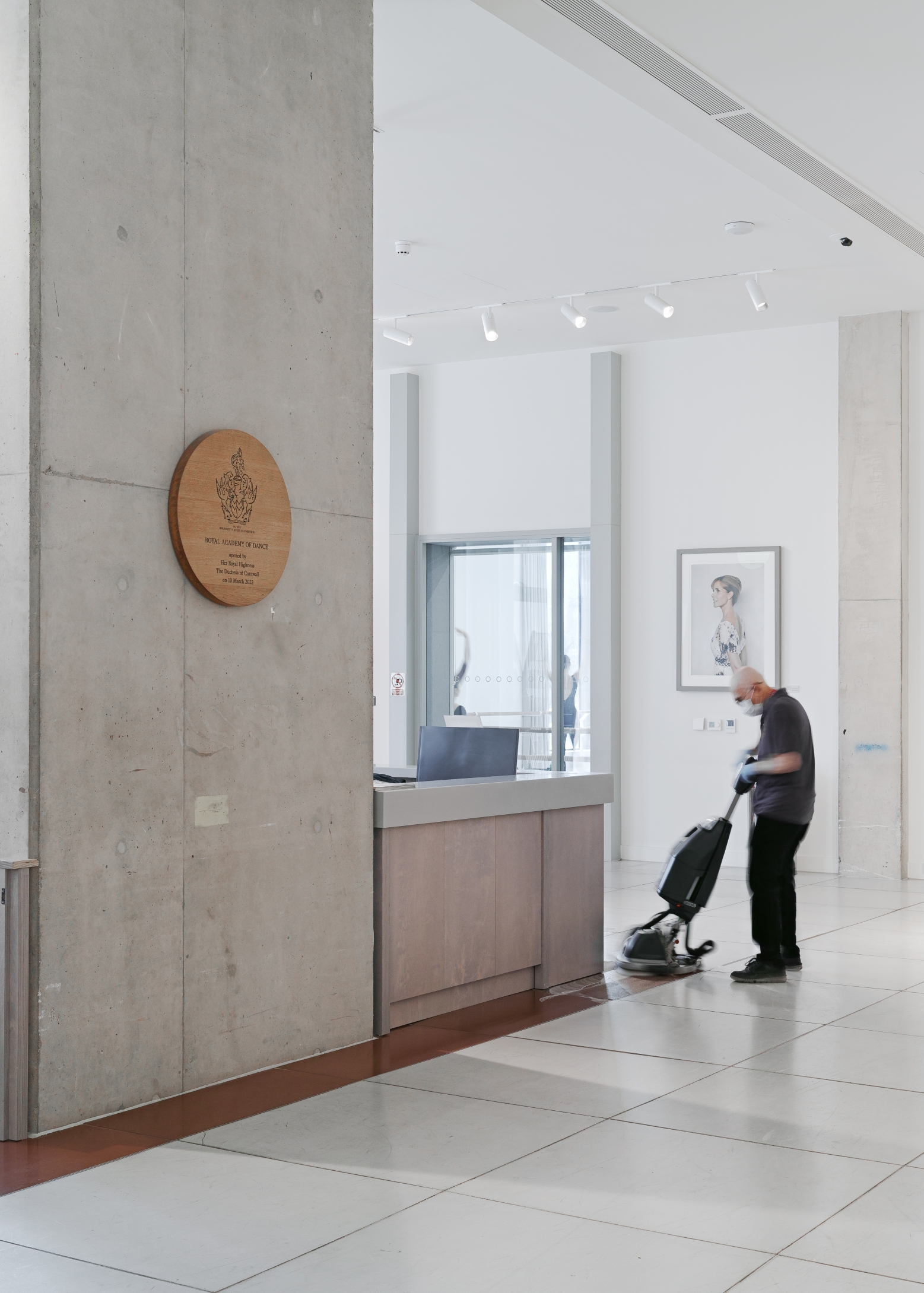
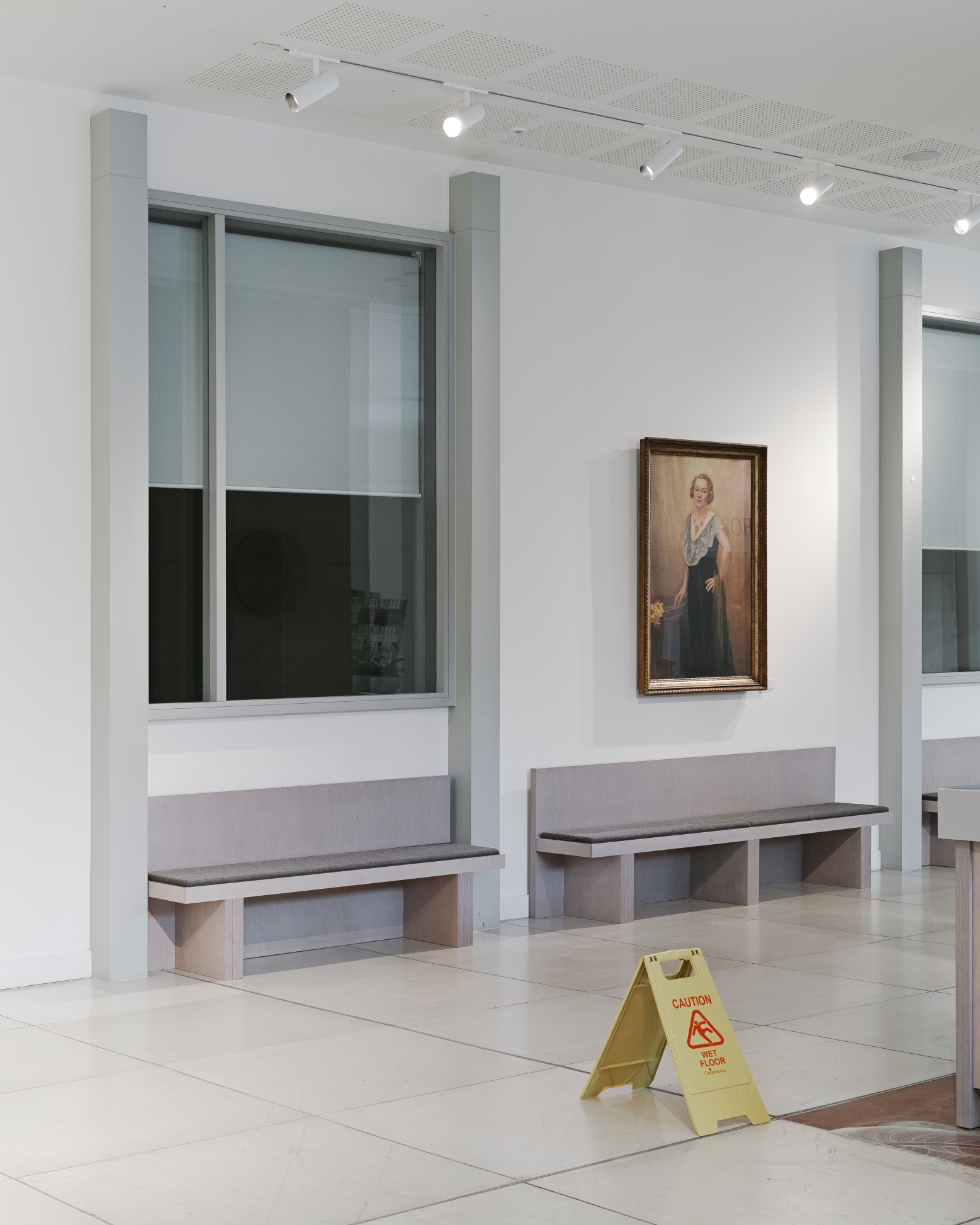
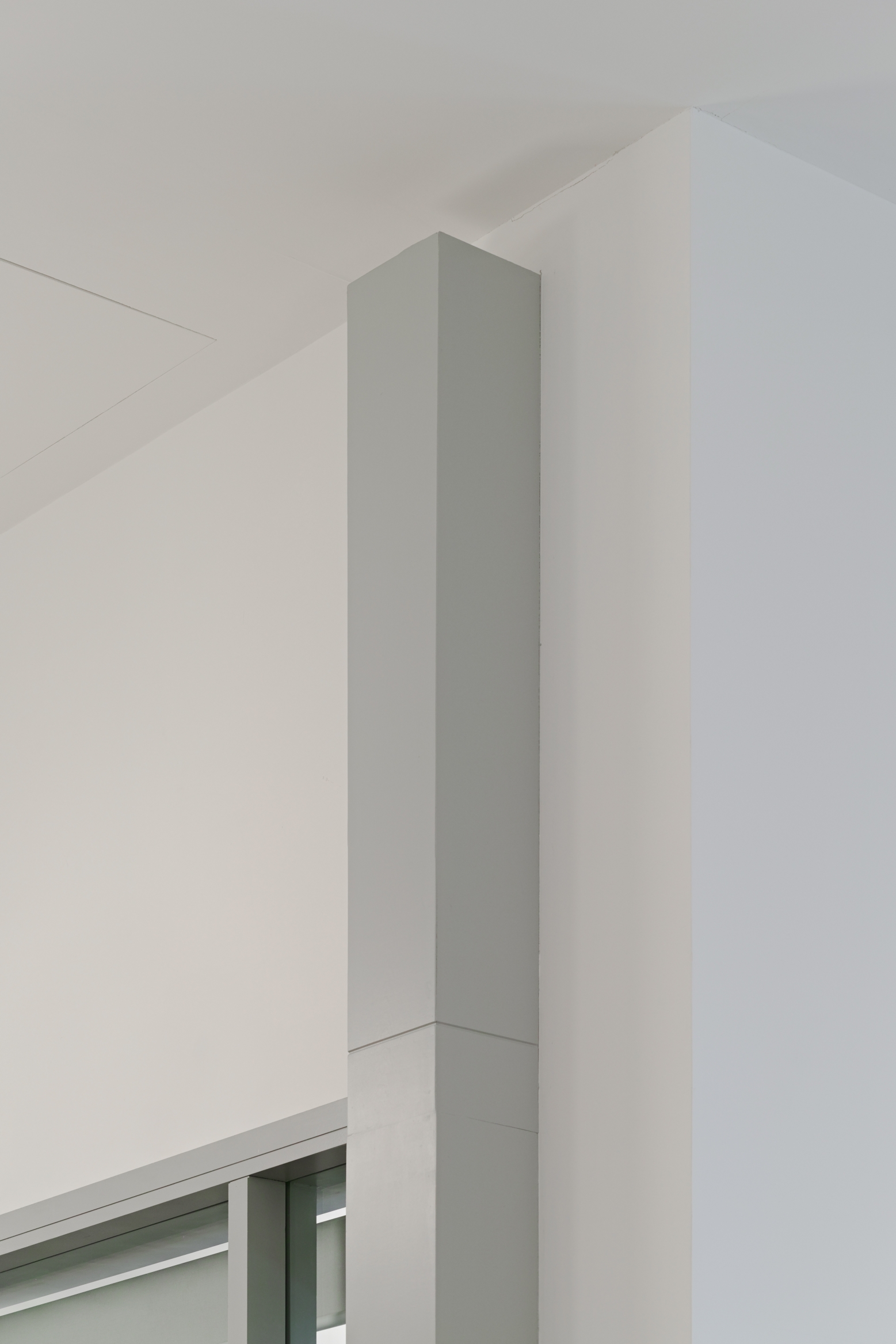
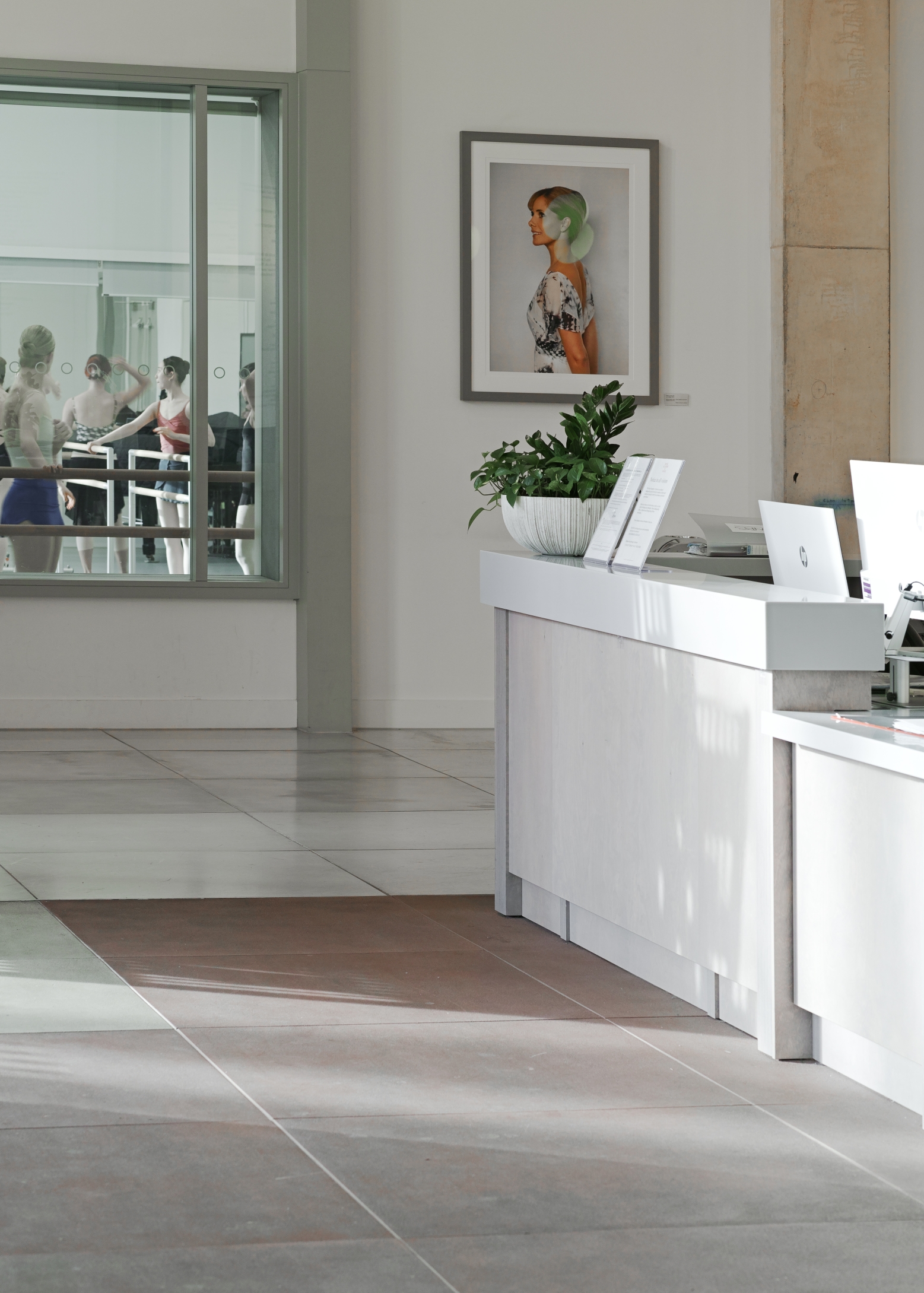
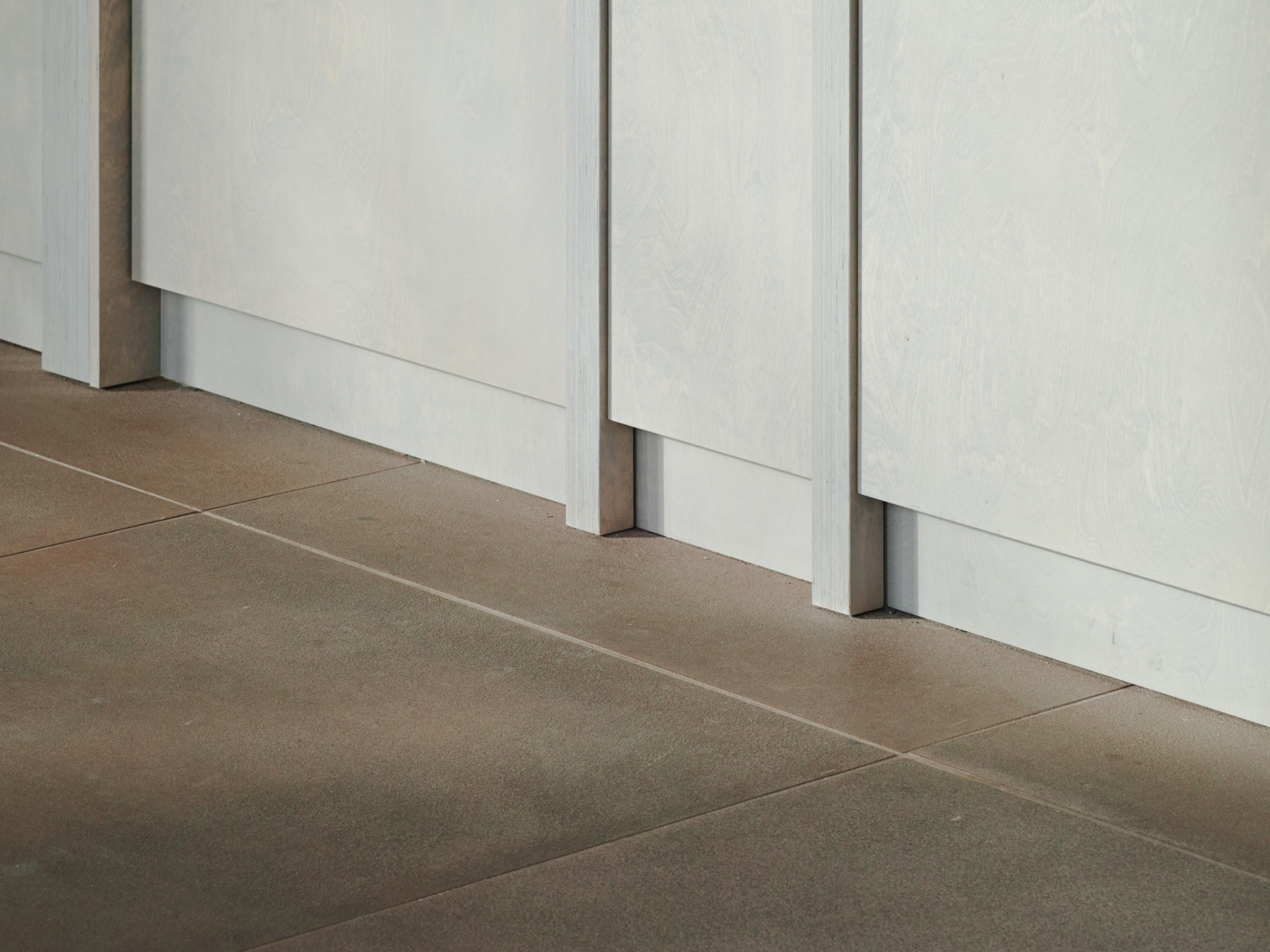
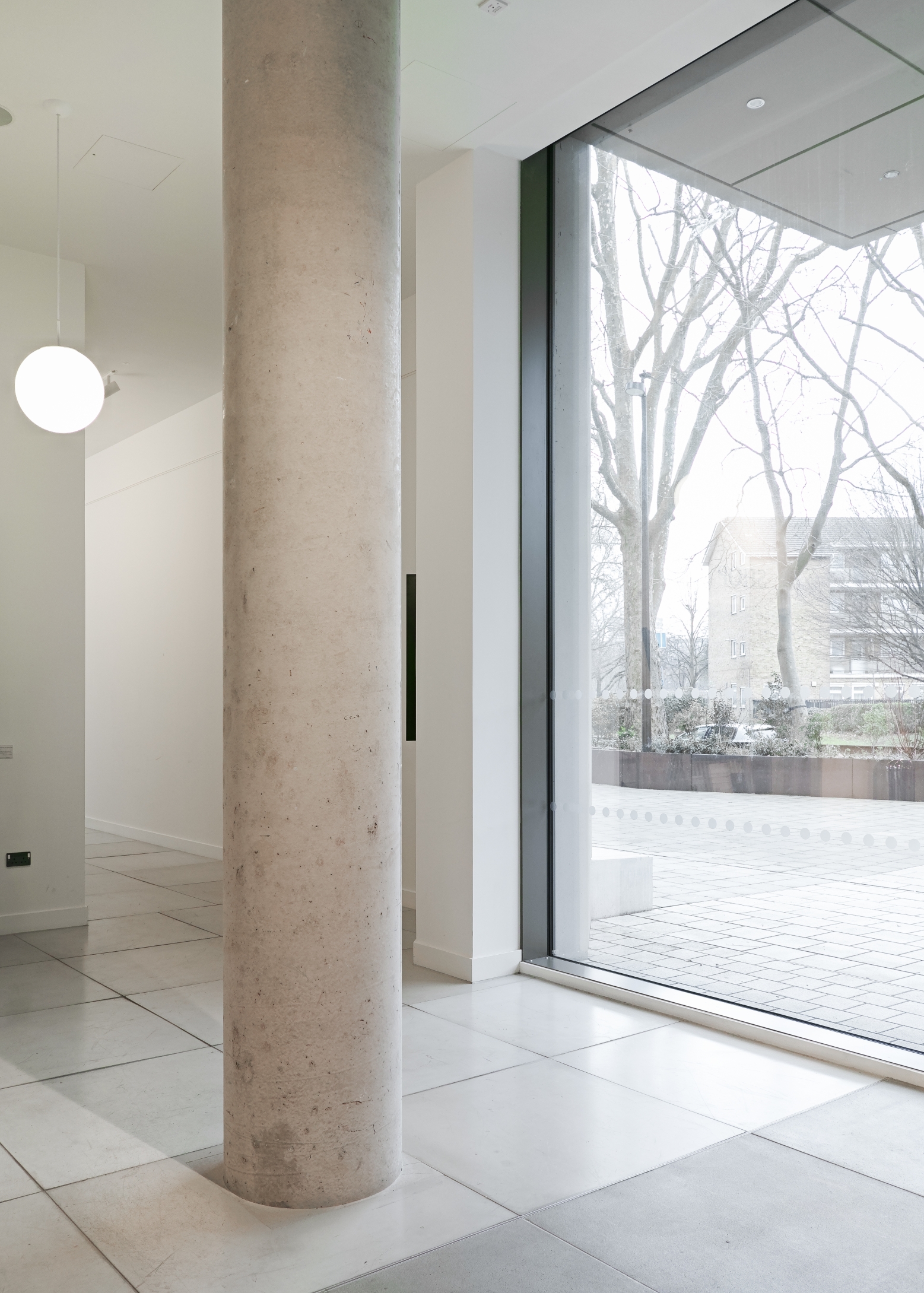
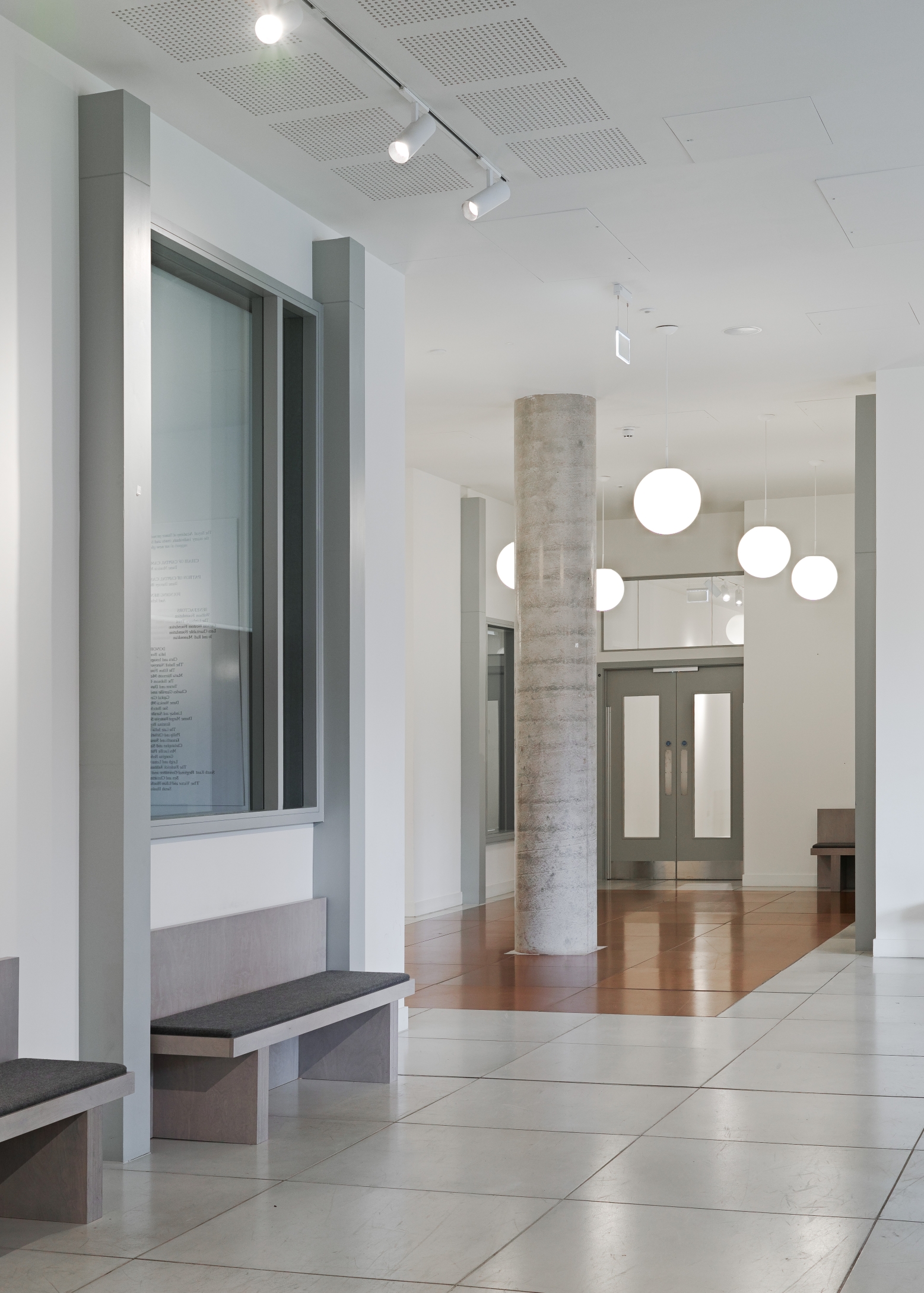
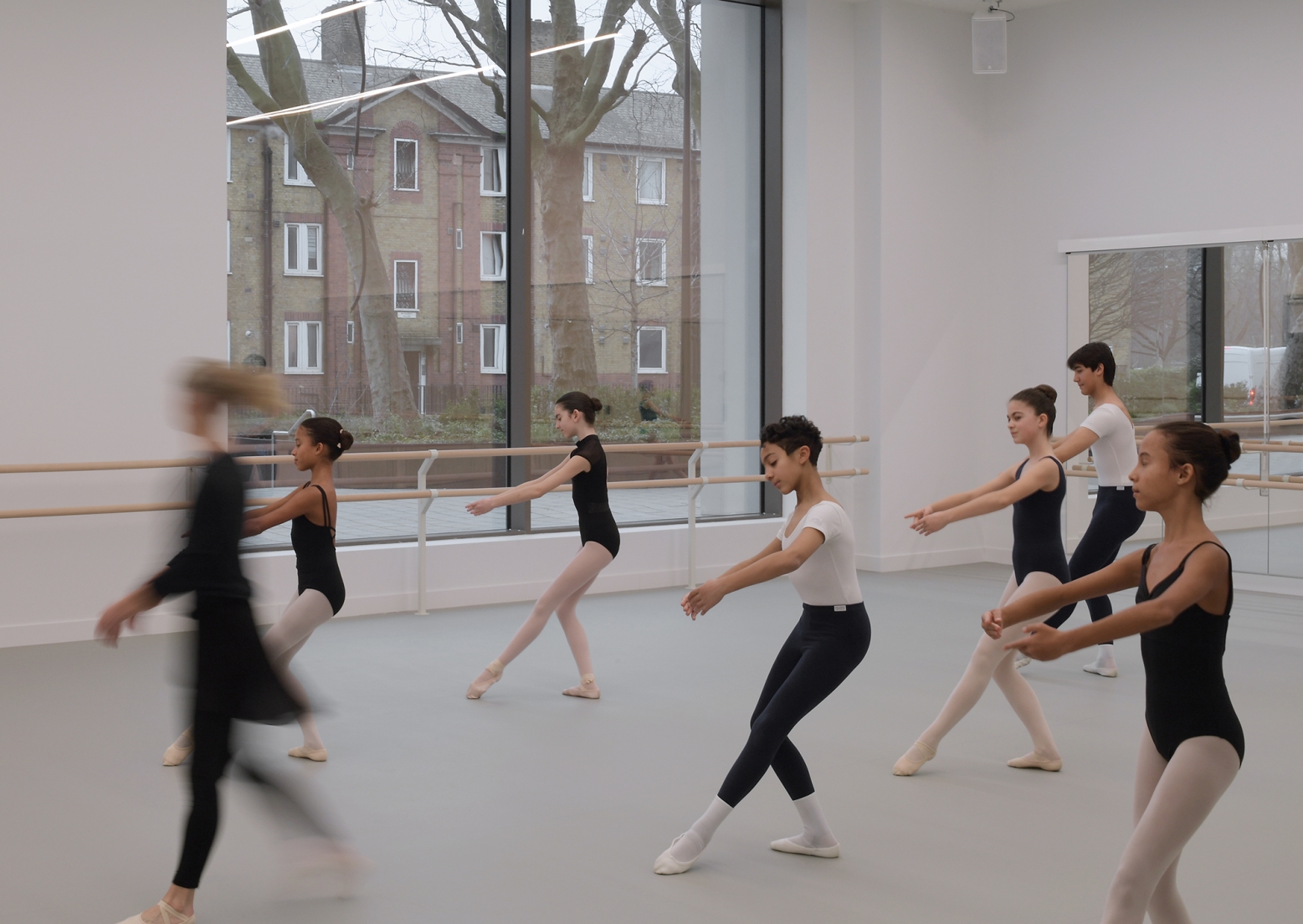
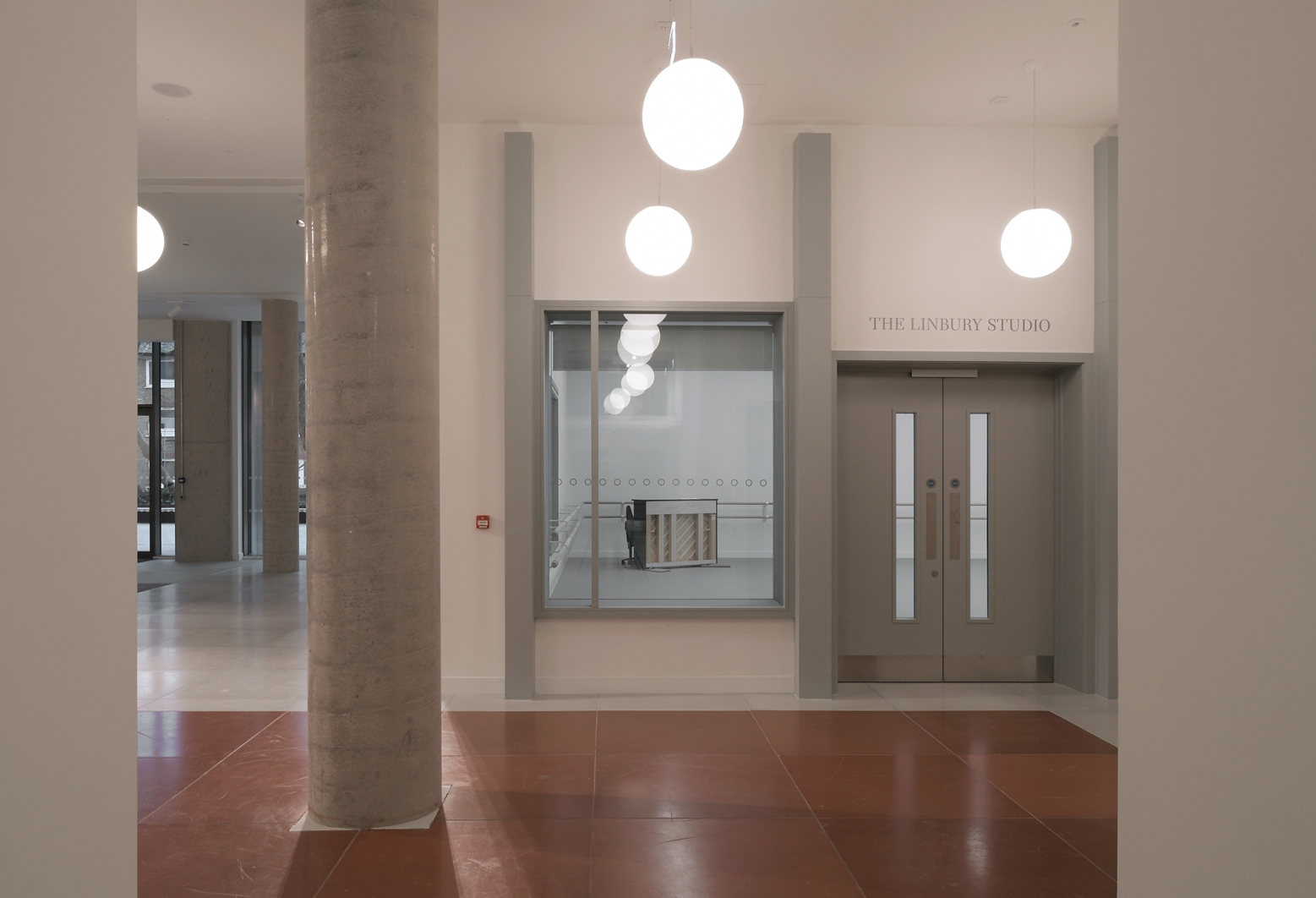
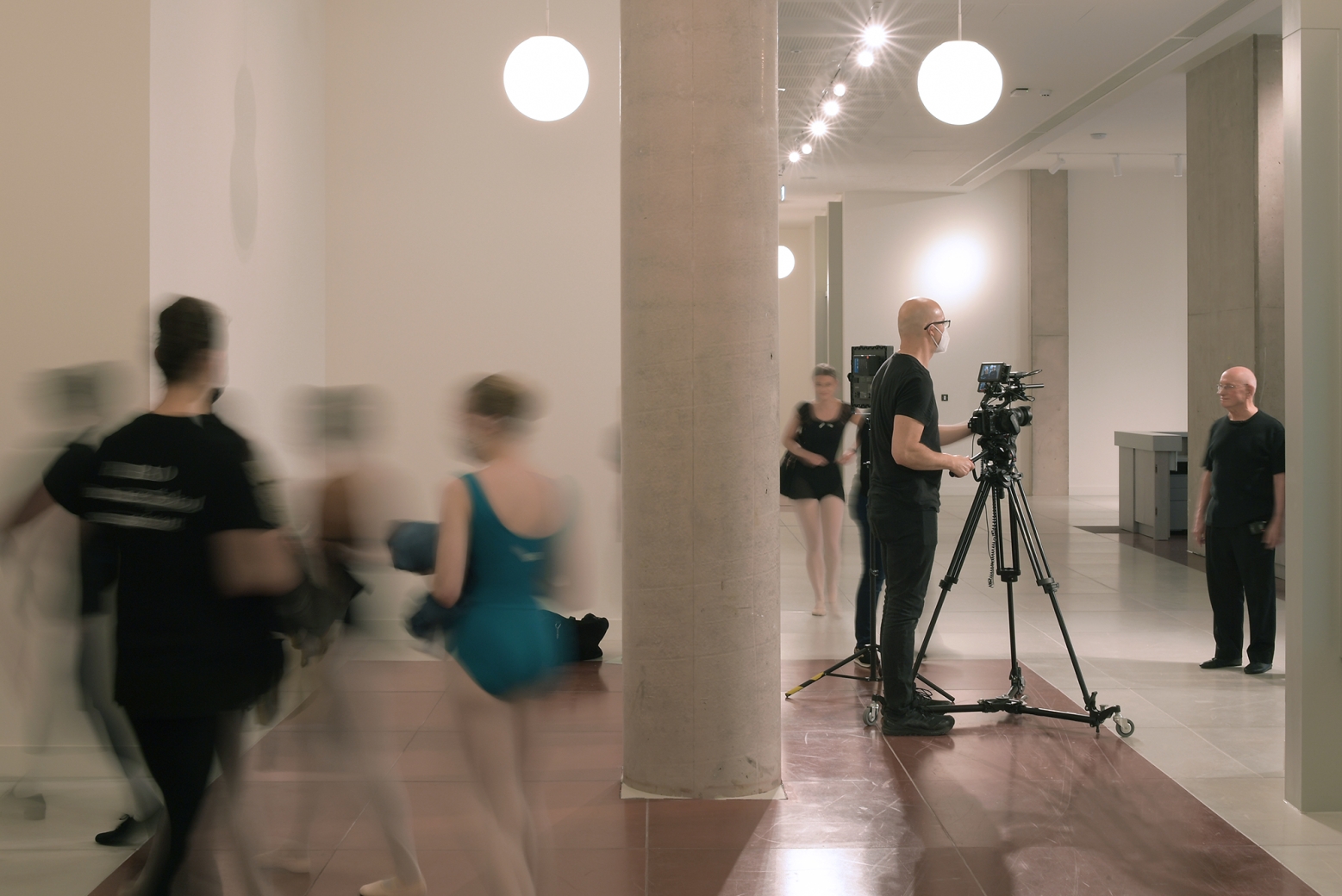
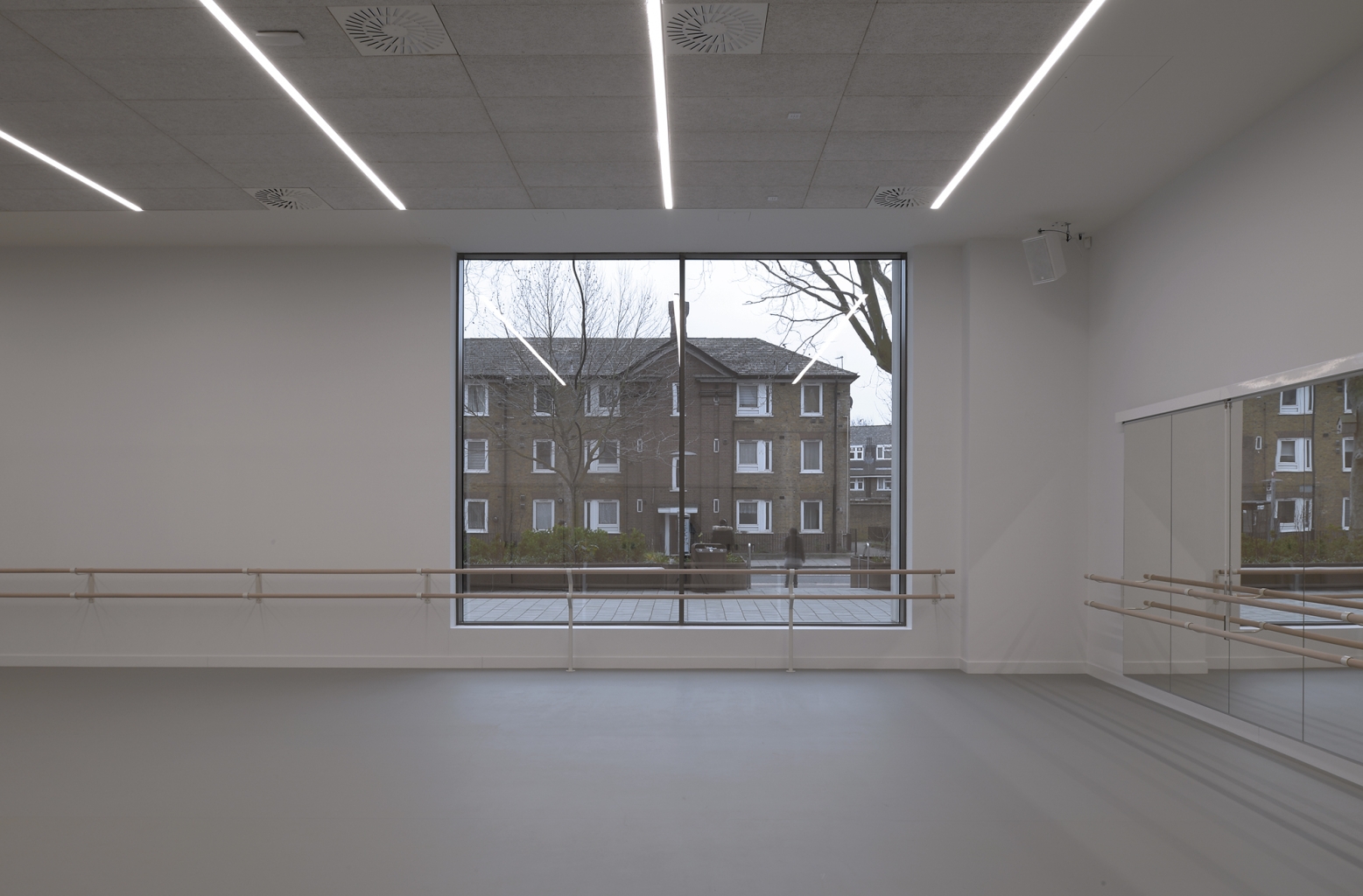
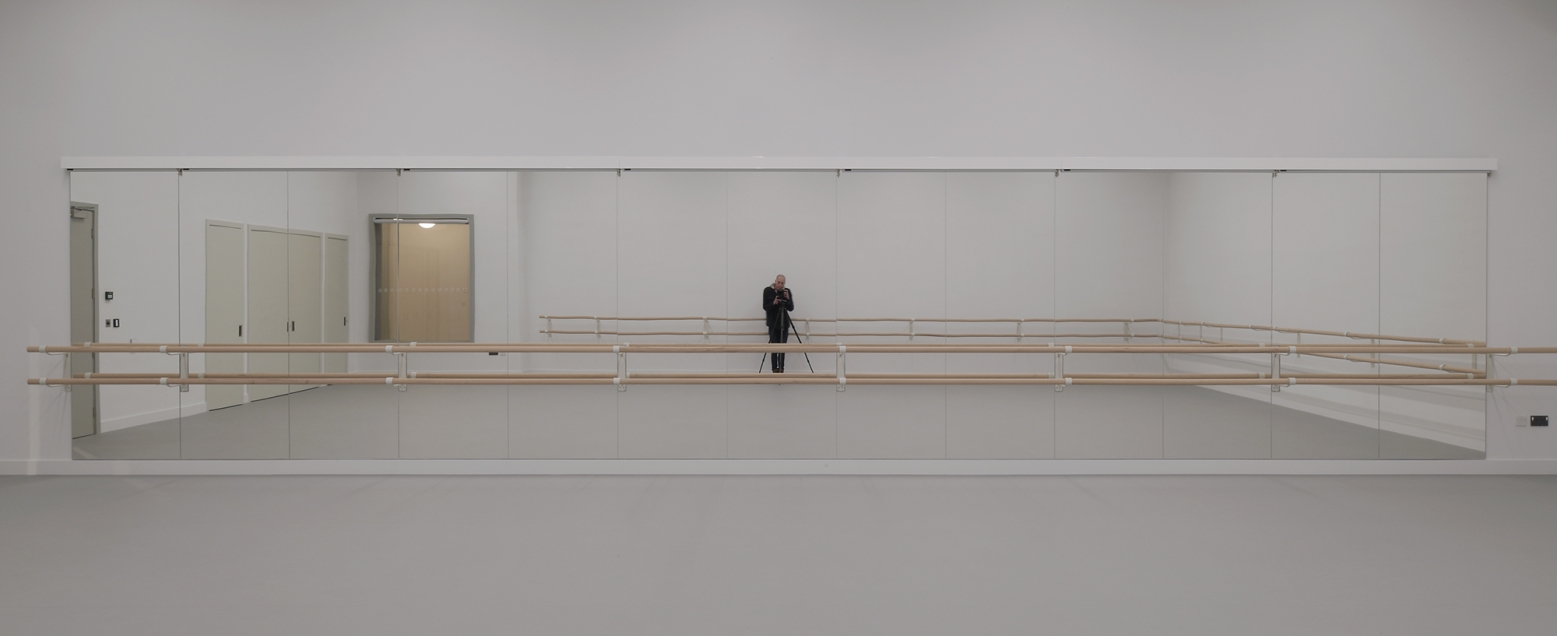
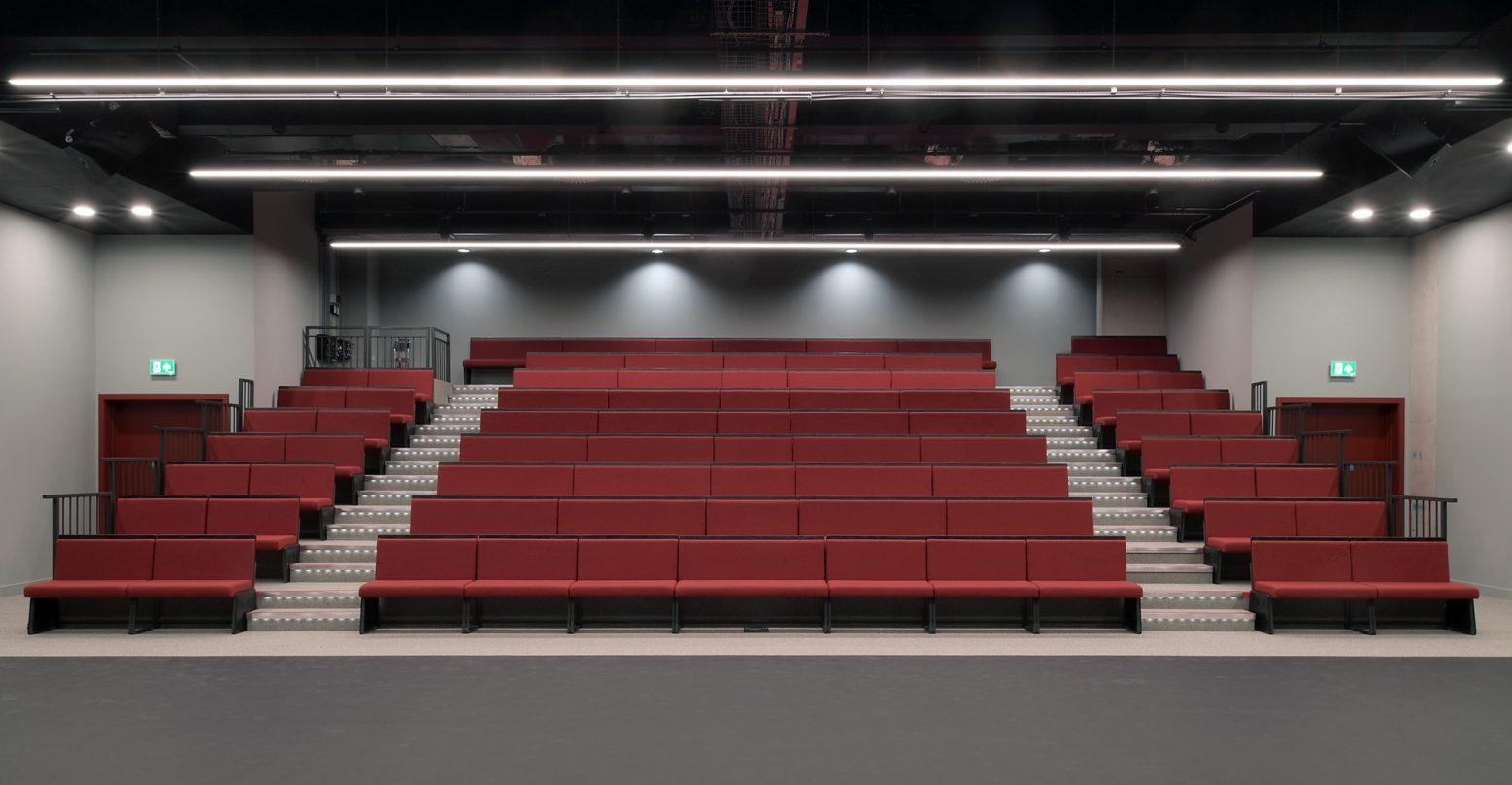
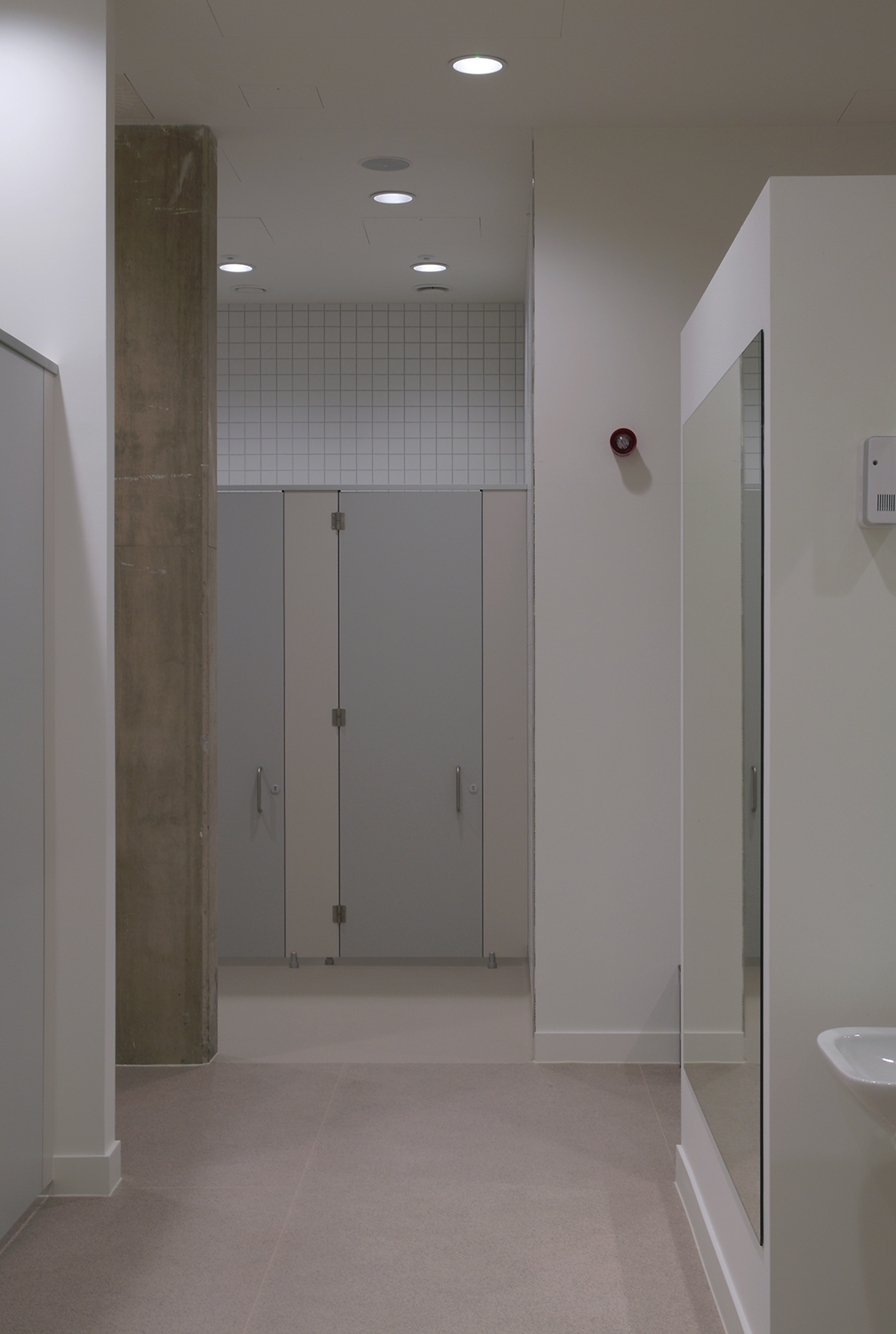
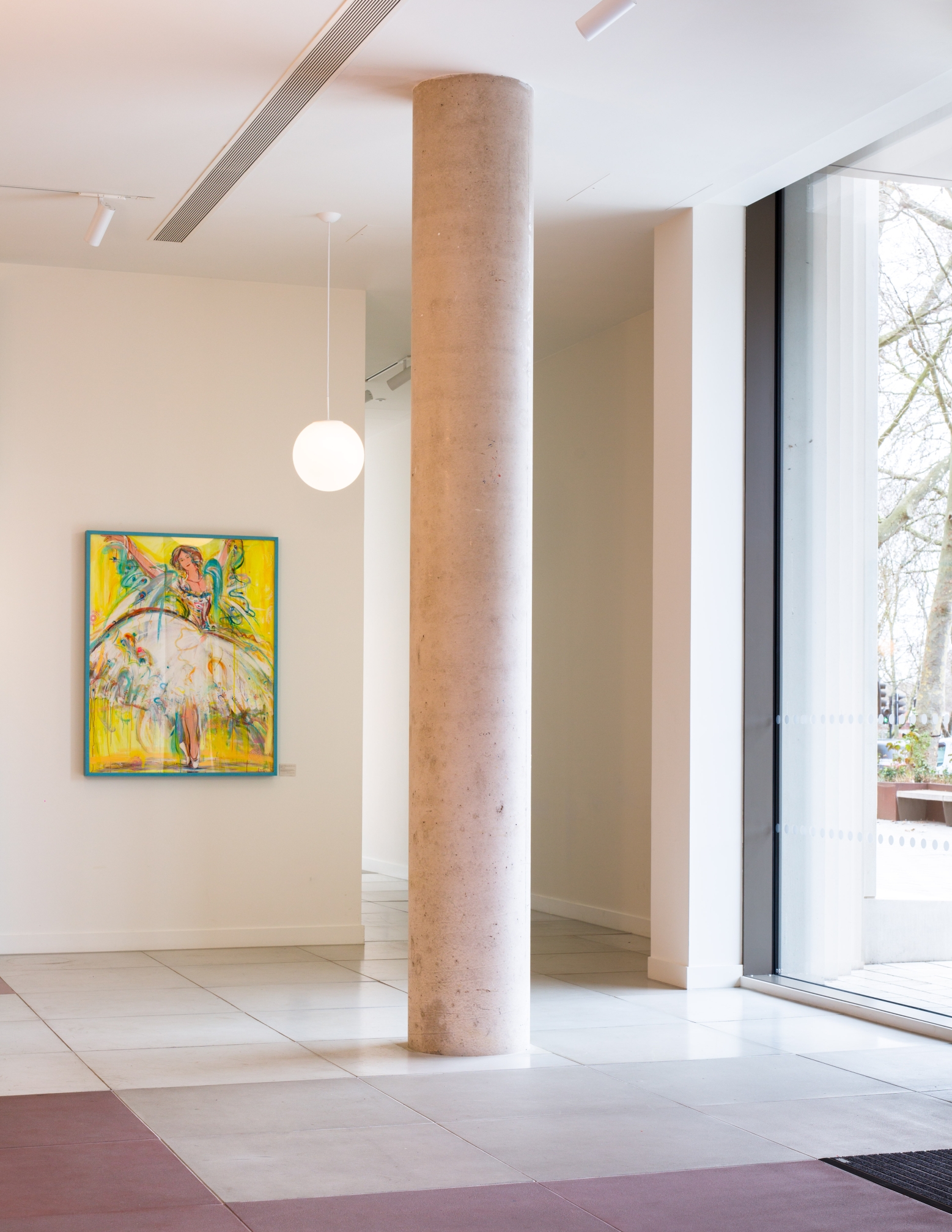
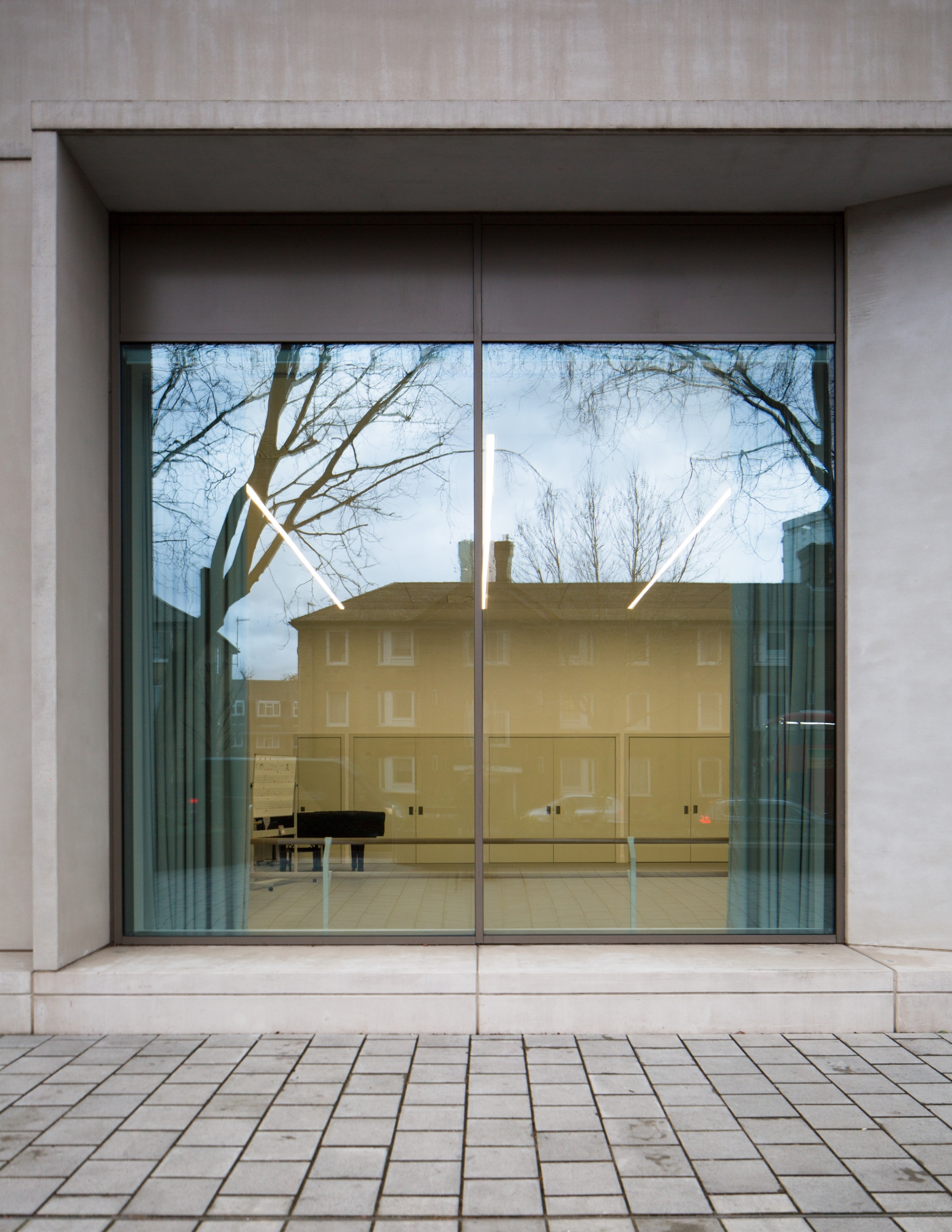
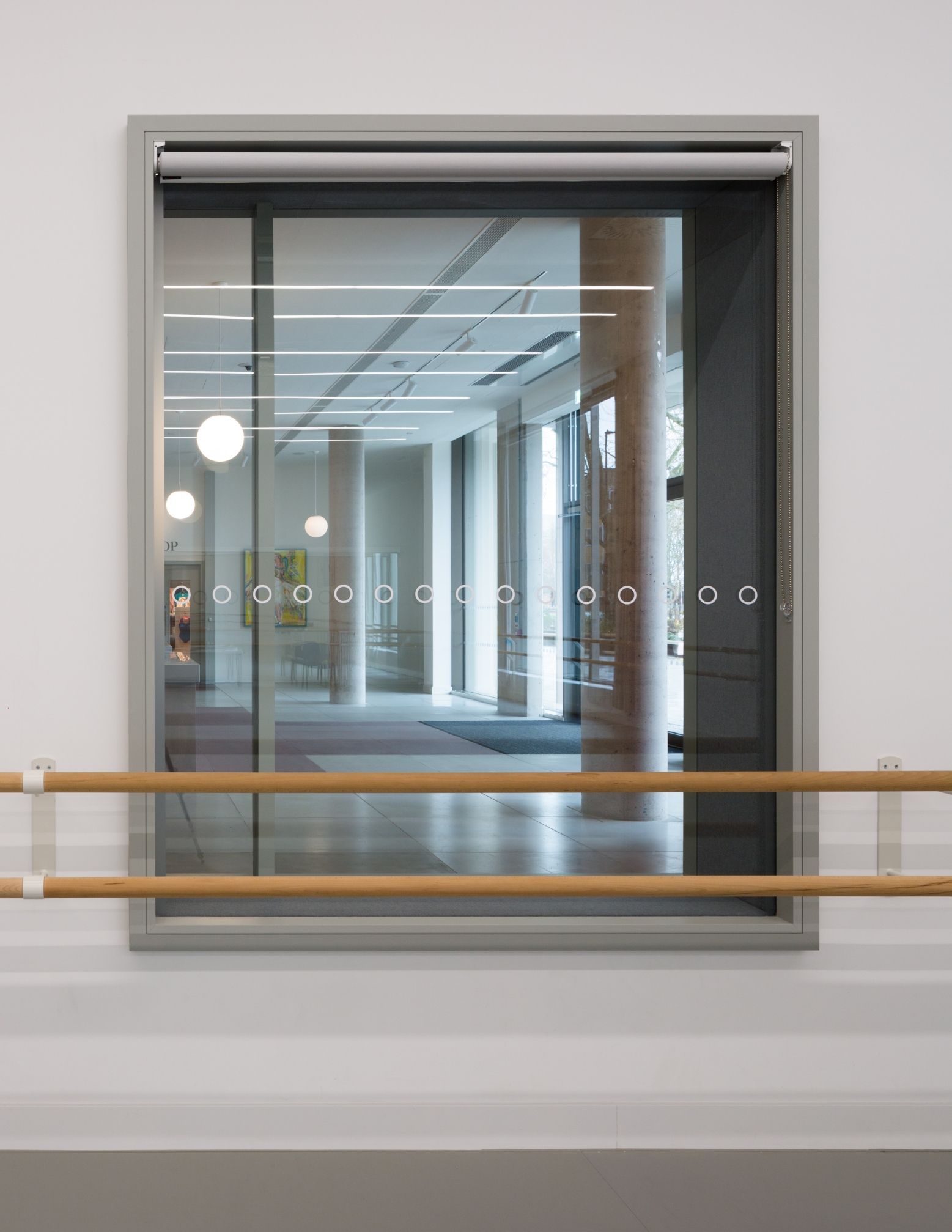
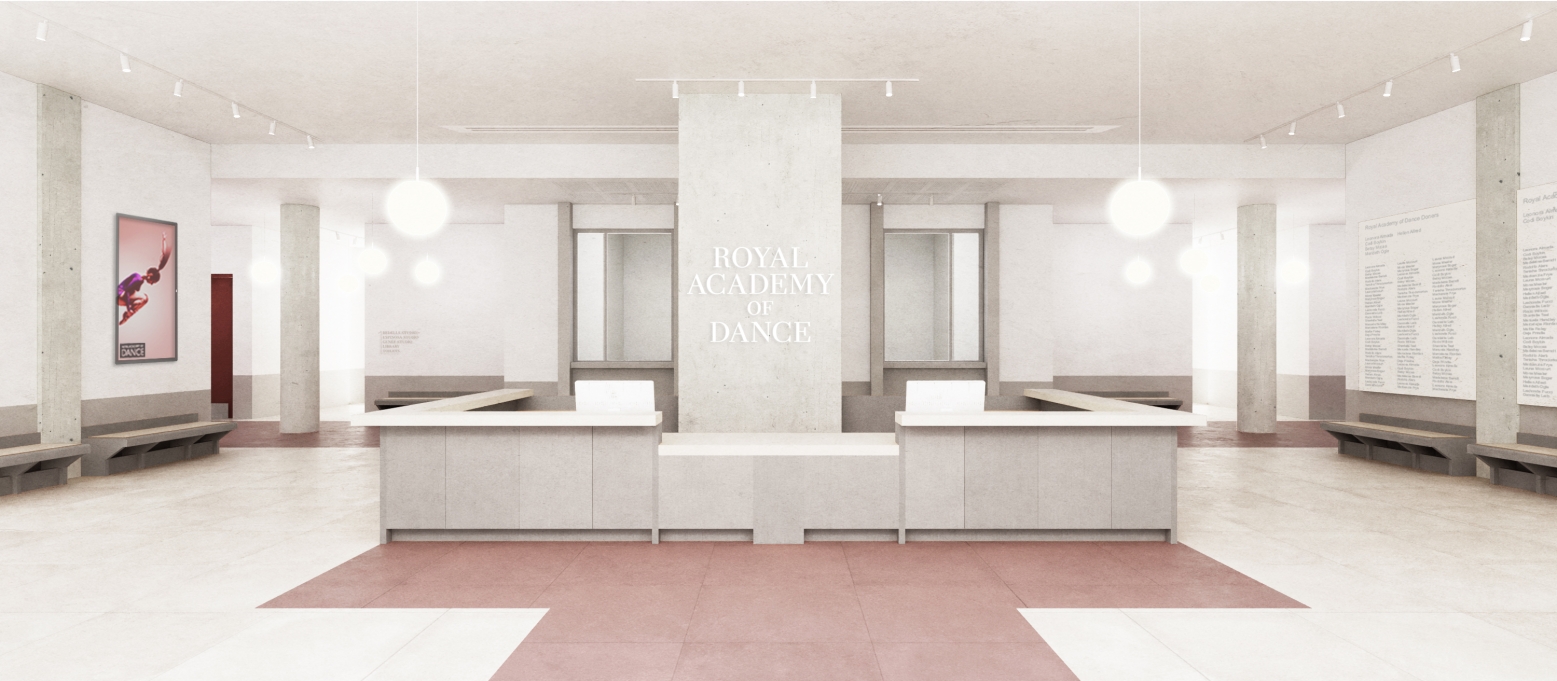
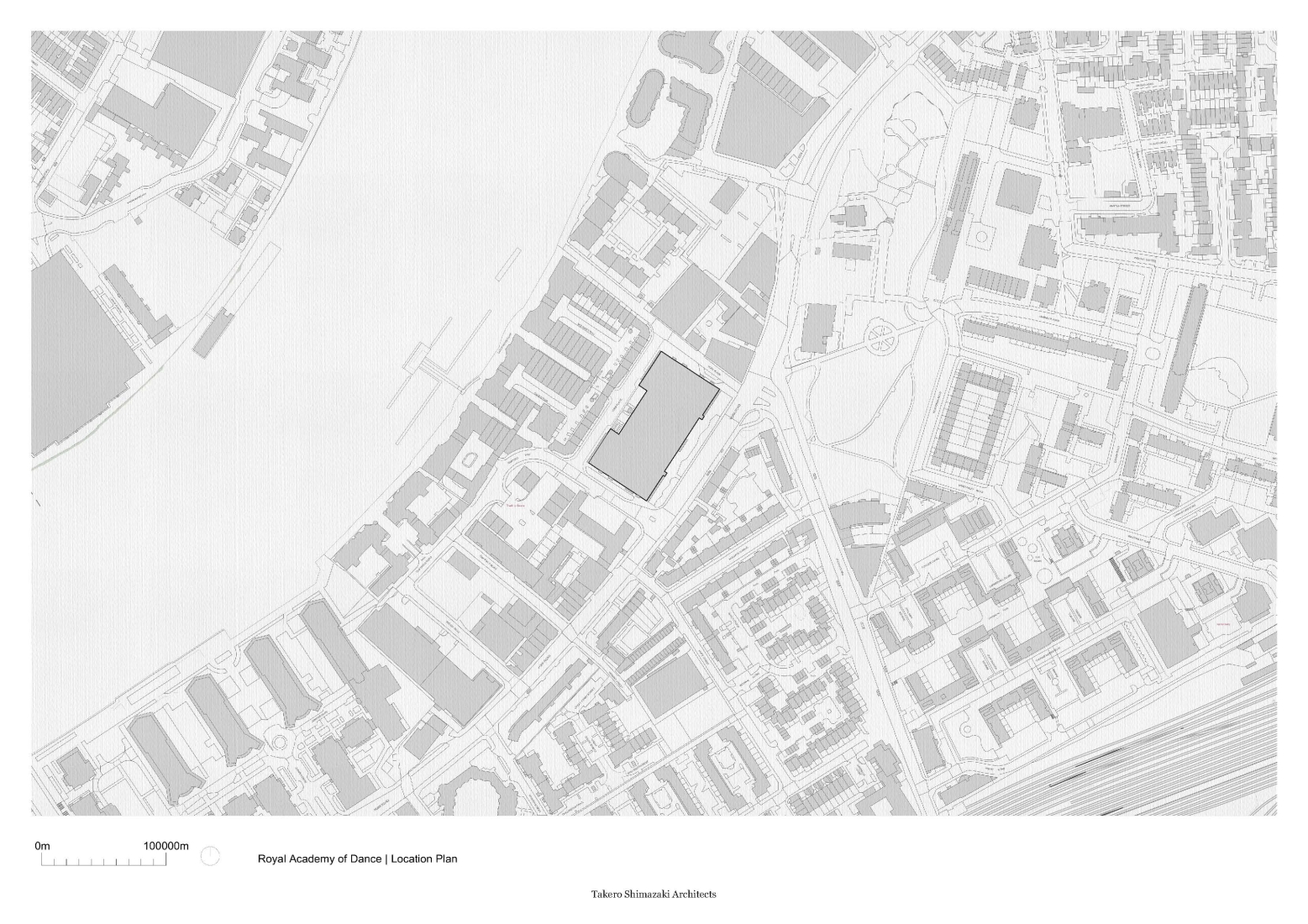
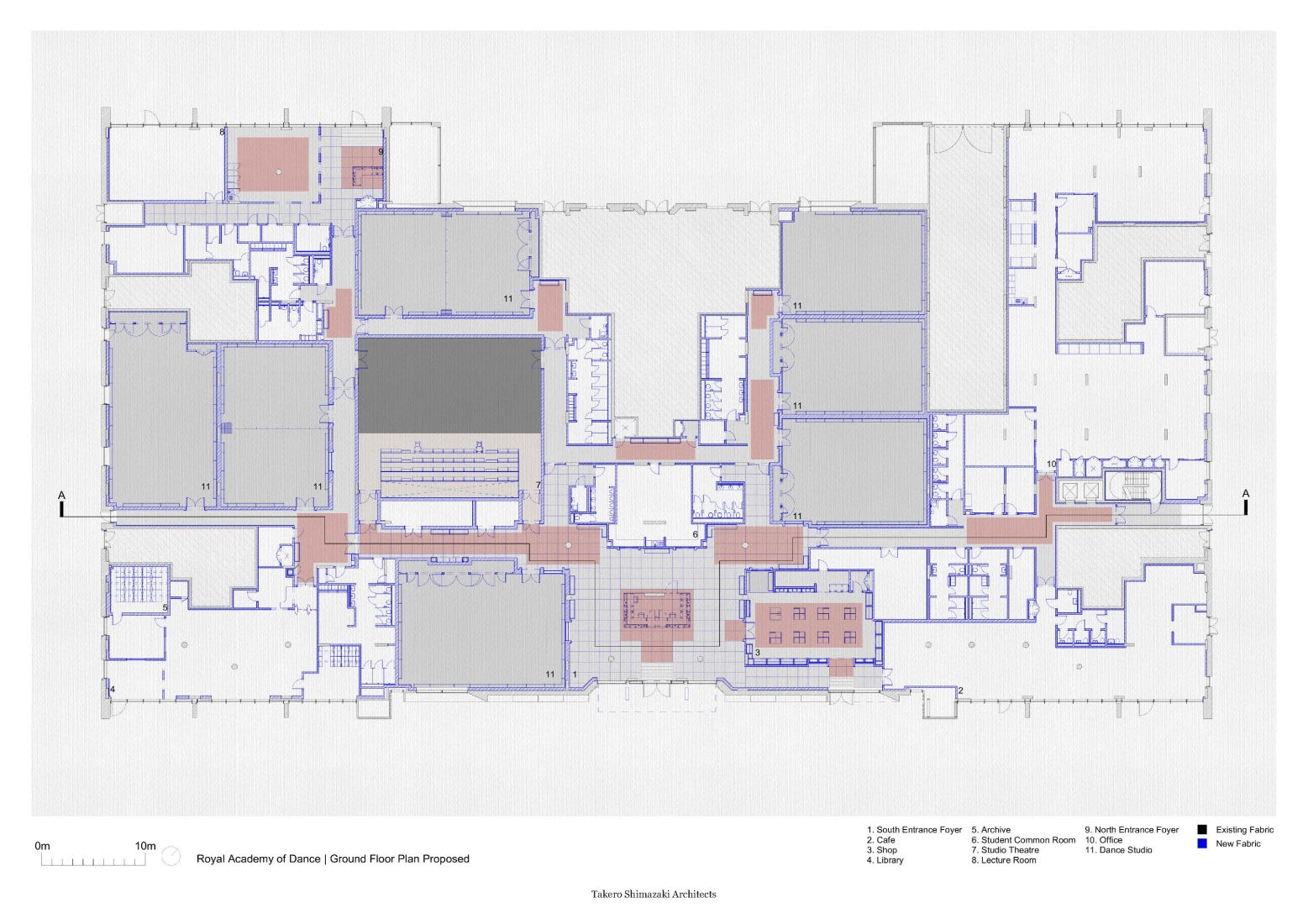
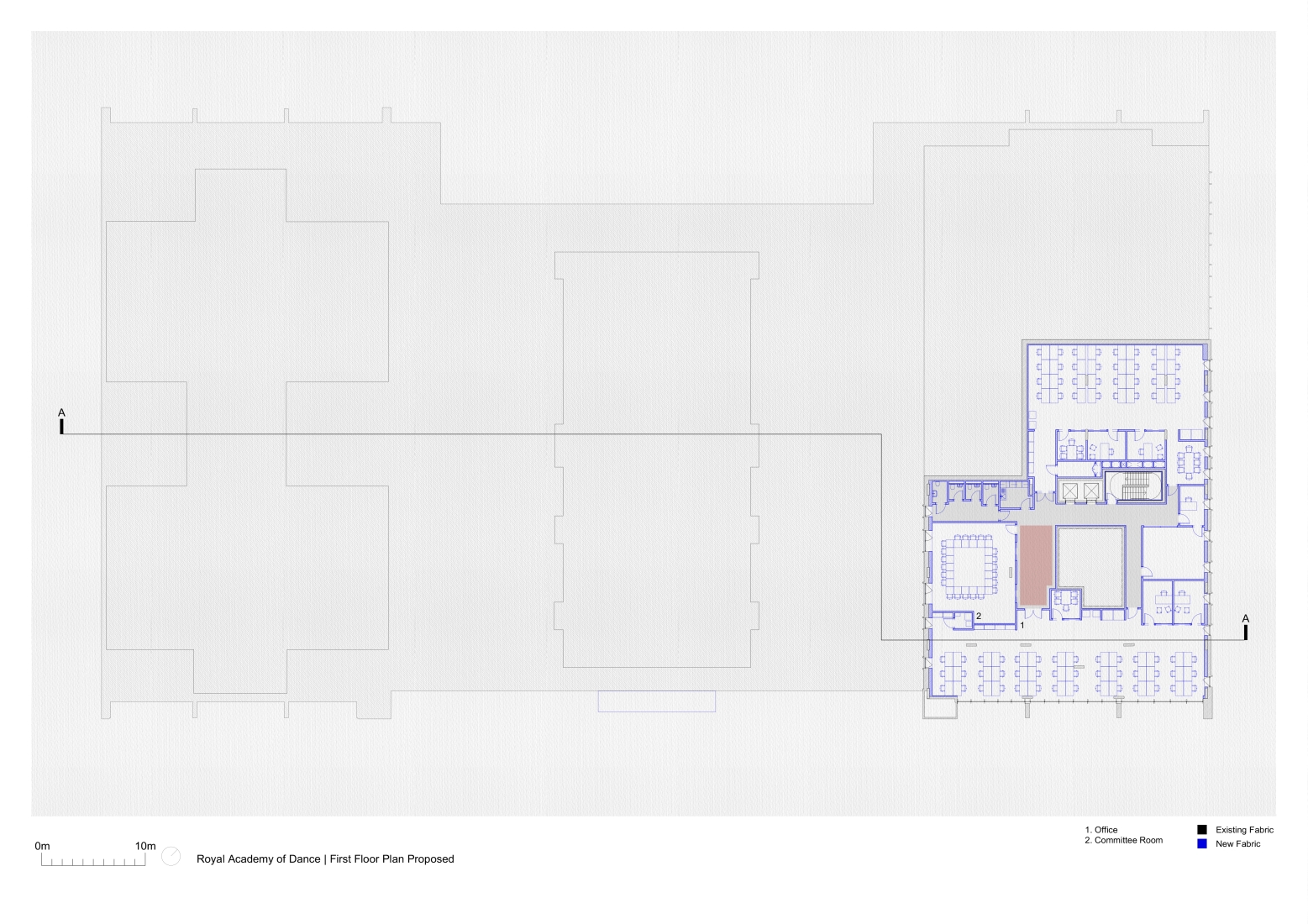
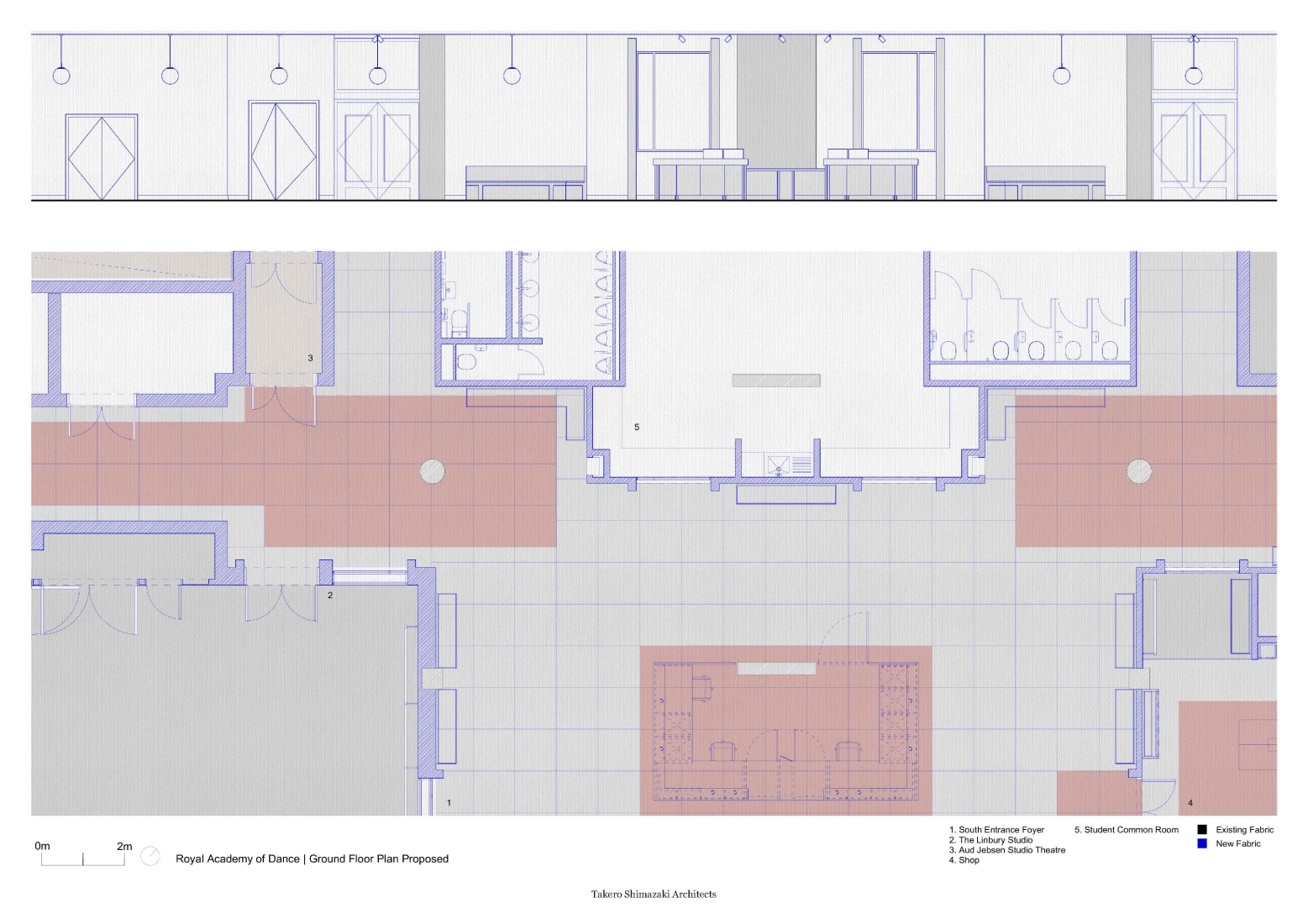
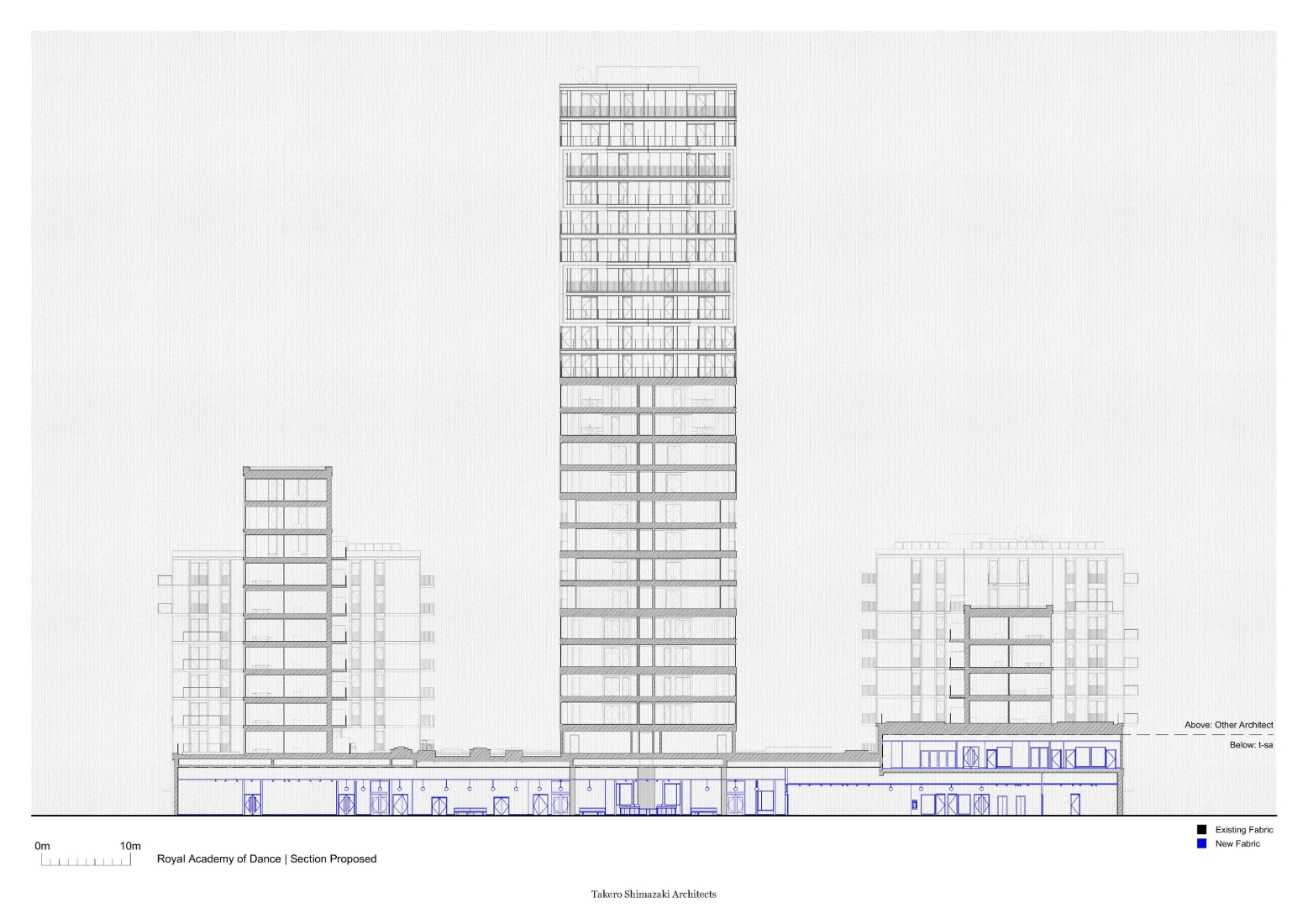
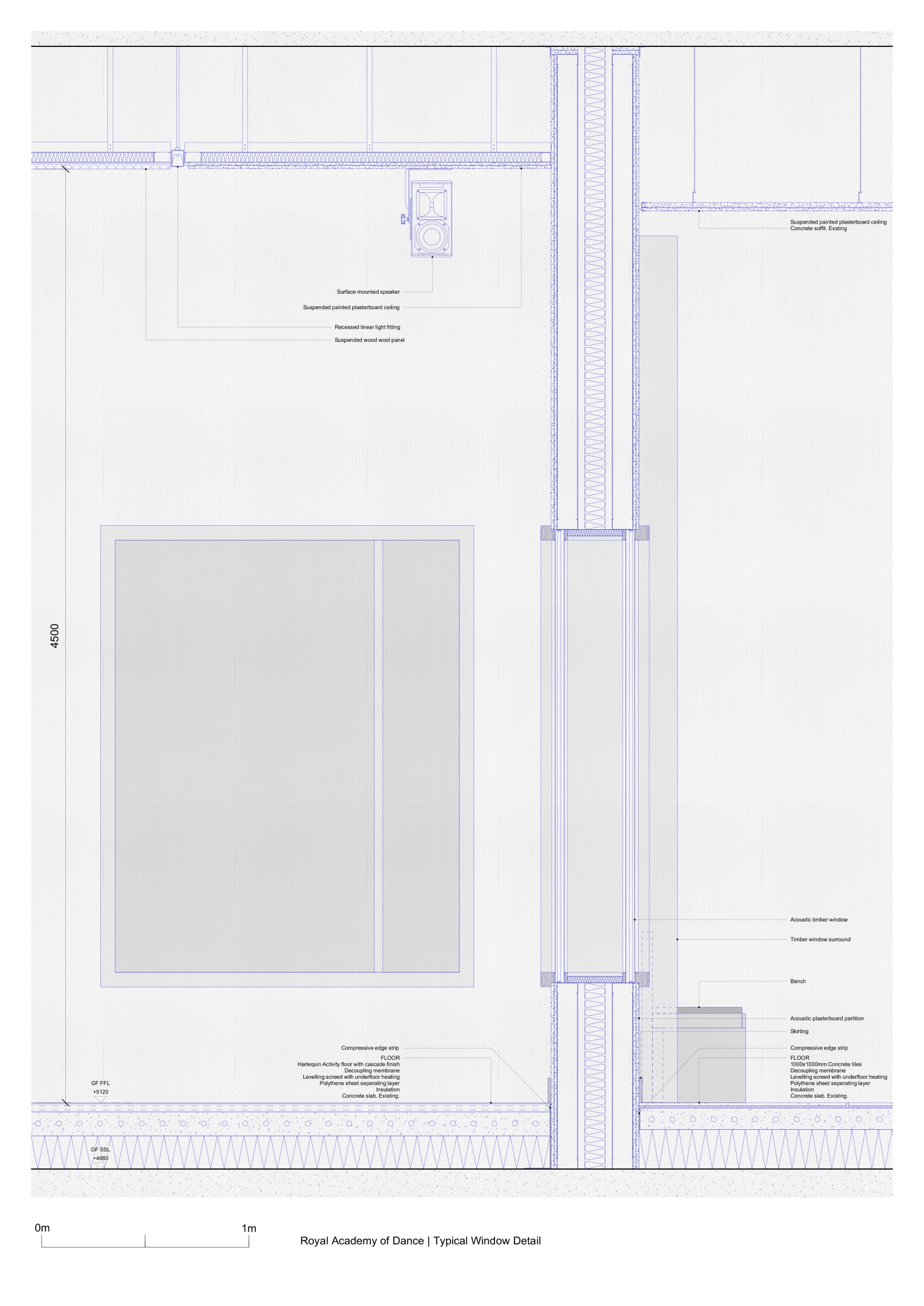
In Summer 2018, t-sa began working with the Royal Academy of Dance (RAD), as they prepared to relocate from existing premises on Battersea Square to a new purpose-built global headquarters located only a short distance away. The new HQ was to inhabit the ground and first floors of a high-rise residential development designed by another architect.
When working within the context of an existing building it is t-sa’s ongoing approach to work with the ‘as found’, undertaking a careful review of the existing building fabric and allowing it to influence the proposed. Here, the existing physical context was defined by the extent of the ground floor ‘podium’ structure serving as a plinth to the three residential towers above, clearly defined by existing perimeter walls and vertical concrete structure. Further non-physical context existed in the complex backdrop of land exchanges and legal agreements fundamental in making the project possible. Considering this, it became necessary to work sparingly within the constraints of an outline specification prepared as part of the legal agreement, elevating materials and forms of construction preferred by the developer to an architectural vision appropriate for the RAD – an organisation with a prestigious history and a world-wide presence. Working together with Sir Luke Rittner (CEO) and other RAD stakeholders, the buildings expansive footprint was reimagined as a continuation of the city where studios and spaces for learning would feel like buildings, connected by a generous network of indoor ‘streets’ and ‘urban plazas’ to be shared by dancers, teachers, staff and visitors. The finished building spans over 5000 square meters and features a Studio Theatre capable of seating more than 180 guests, seven fully equipped dance studios, a shop, library, café and office accommodation all accessed from a generous public foyer.
Responding to the challenge of economy of means, t-sa developed a language of expressed key ‘figures’, beginning with exposing the existing concrete structure found both independently and projecting from walls like artefacts within the cityscape. This ‘as found’ verticality informed new (non-structural) pillars flanking the windows between studios and plazas, expressing the importance of these openings to the internal urban setting. These pillars don’t quite touch the ceiling, expressing their symbolic gesture. White internal walls provide a subtle backdrop for the expressive movements taking place and a canvas for artworks celebrating the Academy’s rich history. The neutral palette is supplemented by the textures of exposed existing concrete, acoustically absorbent materials and highlights of red used boldly to define spaces for gathering.
A similar design attitude was adopted for the exterior, where t-sa’s input was limited to the new entrance canopy conceived as a ‘figure’ announcing the school’s presence to the city and marking the moment in the newly formed street landscape. External and internal signage design was developed in collaboration with Wolfe Hall as part of the RAD’s new graphic identity.
Dance is celebrated and can be felt throughout as large internal windows framed by vertical pillars provide views into the studios and animate the ‘streets’ that serve them, blurring the edges of public and private space. The buildings completion coincided neatly with the RAD’s centenary year, representing a new chapter in the Academy’s history.
t-sa Team: Takero Shimazaki, Jennifer Frewen, Joshua King
Photographs Felix Koch, Anton Gorlenko, David Grandorge